Tropical Rainforest Plants That Can Be Grown
PHOTOS OF JUNGLE MUSIC NURSERY PLANTS
| ANNOUNCEMENT: COVID19 & OUR NURSERY MEASURES IN PLACE TO KEEP YOU SAFE OPEN FOR BUSINESS SPECIAL PRECAUTIONS TO PROTECT YOU MAIL ORDER, DELIVERY OR PICK UP DURING BUSINESS HOURS READ MORE ABOUT WHAT WE’RE DOING TO PROTECT ALL FROM COVID |
INTRODUCTION
There are a multitude of types of tropical plants that blend nicely with palms or other trees and will add charm to almost any garden. These “companion plants” add different colors, textures, leaf patterns and appearances to the garden. This article will present to you various tropical rainforest plants that blend nicely with larger trees that you have and add vivid color and diversity.
Almost all of the pictures below were photos of plants at our nursery. Many say that the “garden is not done until you add companion plants”. This is because they mix well and can fit among the larger trunked out existing material in the garden. This will be mostly a photographic tour. I will only make brief comments about each group of plants and include information on culture where possible. Types of plants are presented in random order with new species added here and there. So, return for more photos on another day.
THE ARTICLE BELOW WILL SHOW MANY GROUPS OF PLANTS. WE WILL NOT EMPHASIZE INDIVIDUAL SPECIES. PRESENTED IN RANDOM ORDER.
WE HAVE MOST PLANTS BELOW YEAR-ROUND AND MANY MORE NOT SHOWN. SEE WHAT’S AVAILABLE WITH PRICES
TROPICAL PLANTS
COLORFUL TI PLANTS
Ti plants are a Cordyline and known for their lush colors and are among the most sought after tropical plants. These colorful plants give a wide range of colors for the garden and tolerate shade. The most popular type is Cordyline fruticosa. These are what we’re showing mostly below. Another type, Cordyline australis, is not so exotic but more cold hardy and take full sun quite well. These are shown in the last row. C.fruticosa originate from Asia and tropical islands. They do have some susceptibility to cold and must be protected during the winter if you live in areas that see freezes.
We have found that they like good draining soil, average water and fertilizer, and filtered light with most species. We have also found that those with darker colors such as dark red, black, or a combination of these colors do better over the long run. Those with sherbet colors are more difficult to grow. Ti’s are one of the most colorful of the group of tropical rainforest plants. Significant cold weather and freezes are hard on this group of plants. Over the seasons, colors and availability of these change.
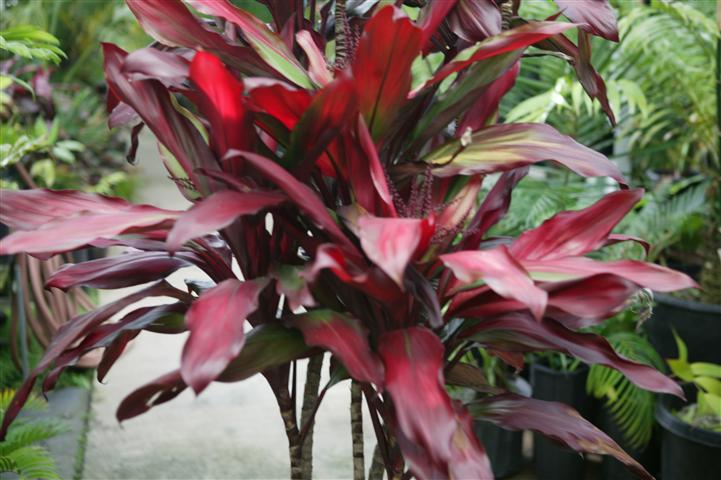
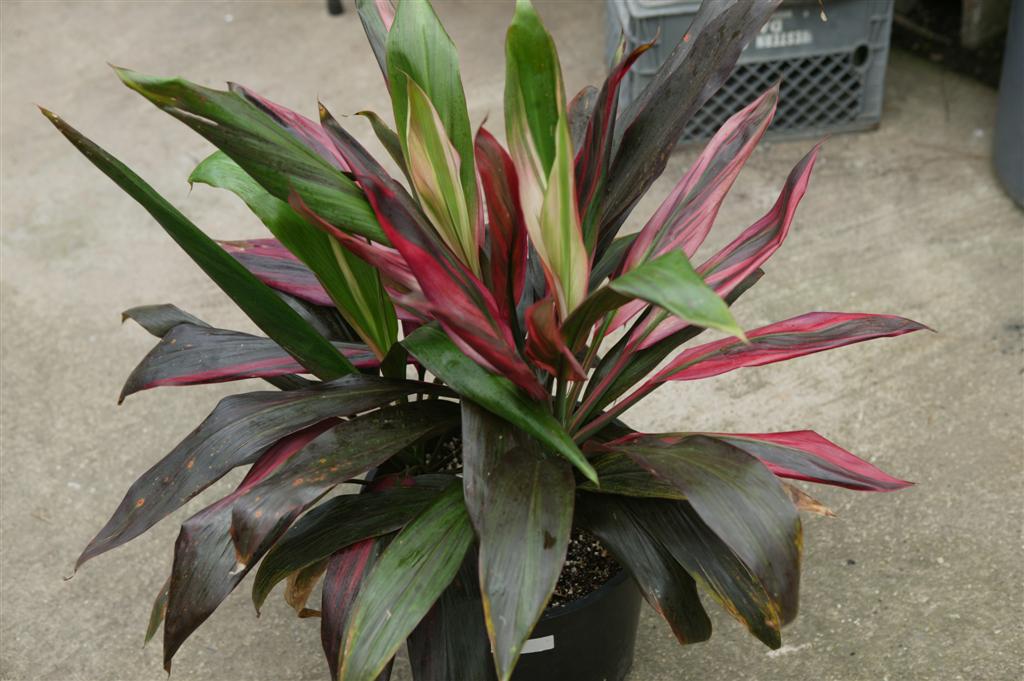
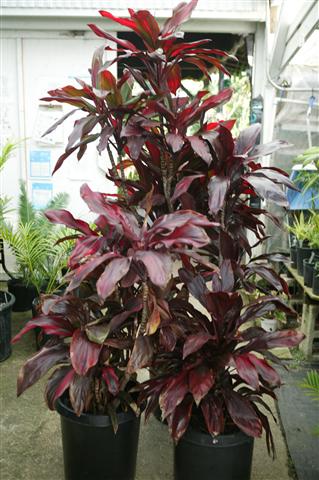
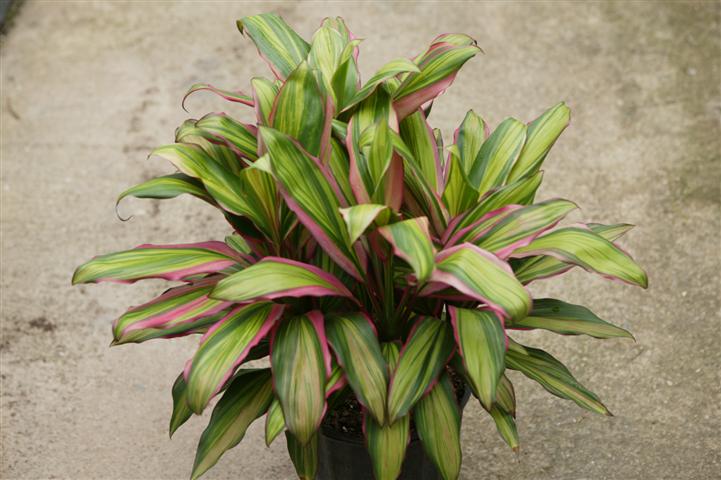
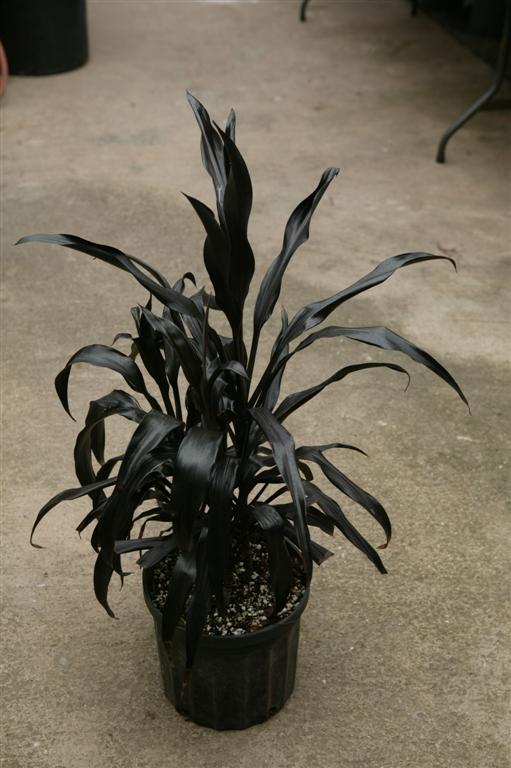

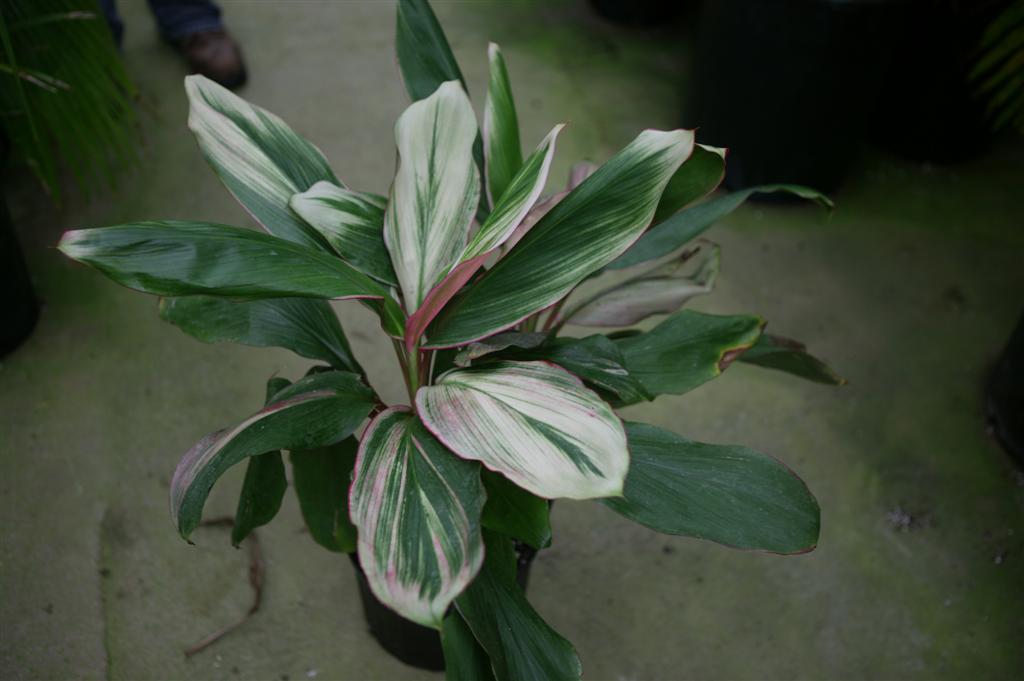

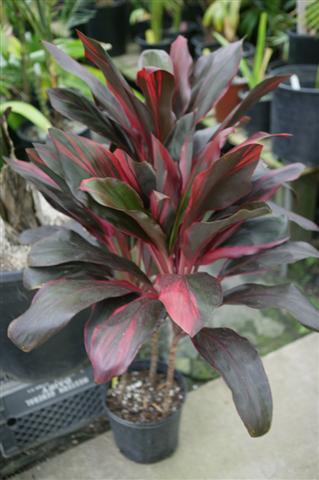
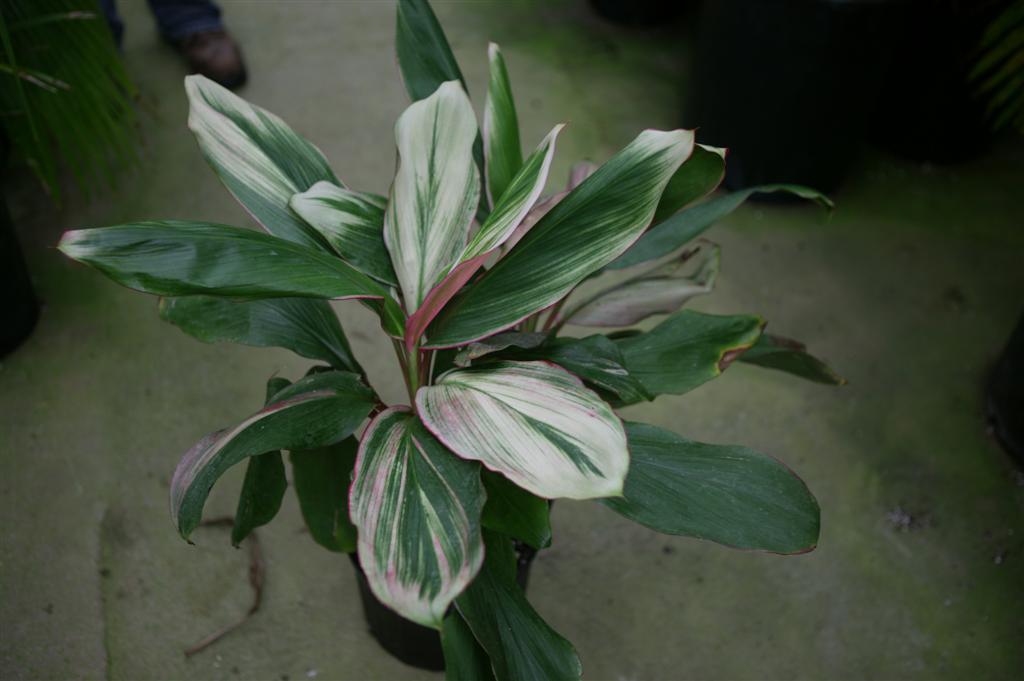

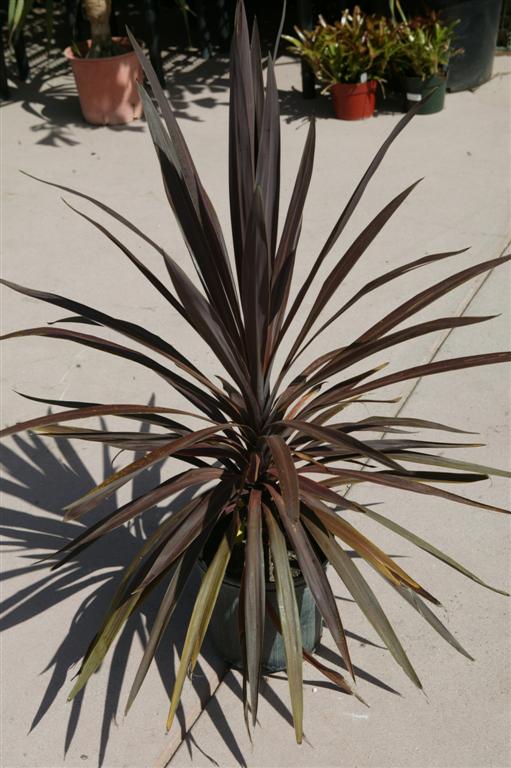
ALOCASIA – EXOTIC TROPICAL LEAFED PLANTS
Alocasia are a group of ornamental plants known for their foliage more than their flowers. Some have very large leaves with striking colors. Native to many areas of the world, these exotic plants give a different flair to the garden. Many have tubers or rhizomes below the ground. Some species are not cold hardy at all while others can live easily in Southern California. Some species are dwarf tropical plants while others get up to about 10 feet. Most prefer part day sun although a few take full sun. Also, most prefer a frost free area. See Article on Alocasia we often carry


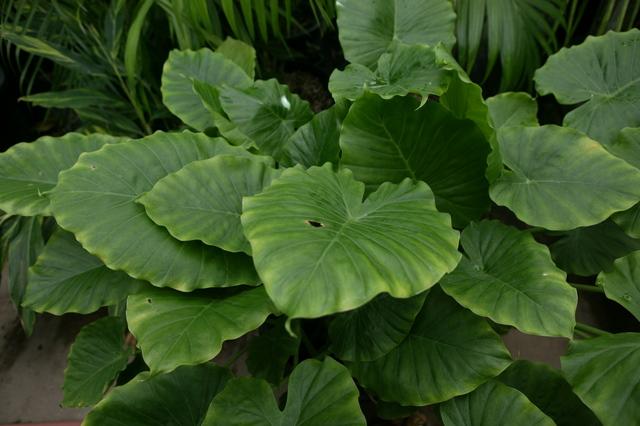
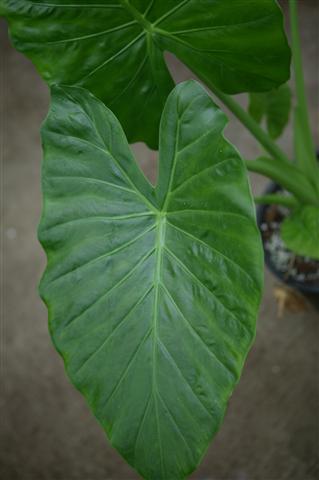
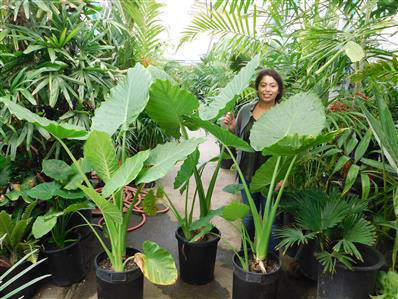
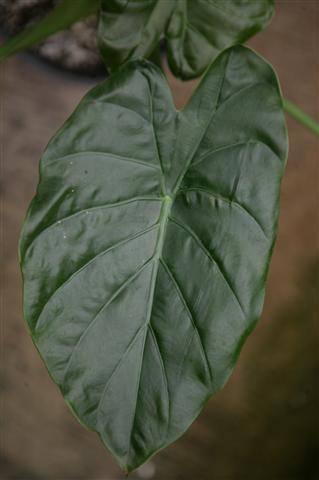
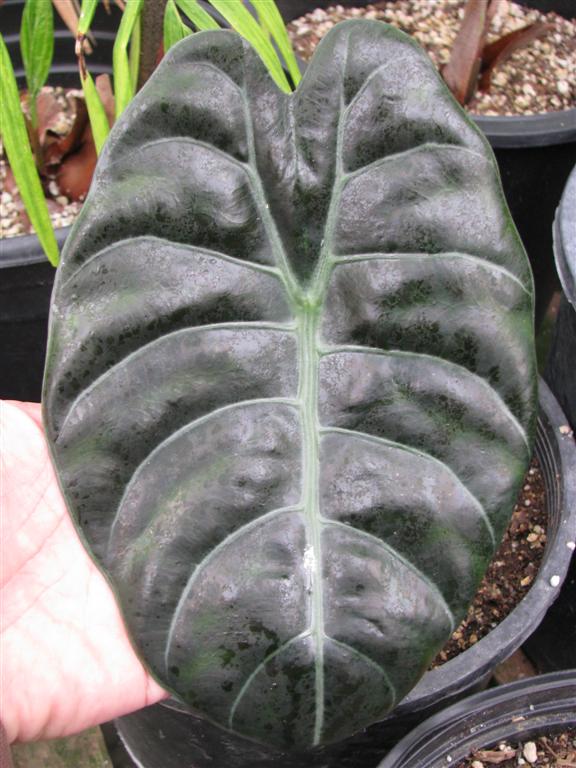

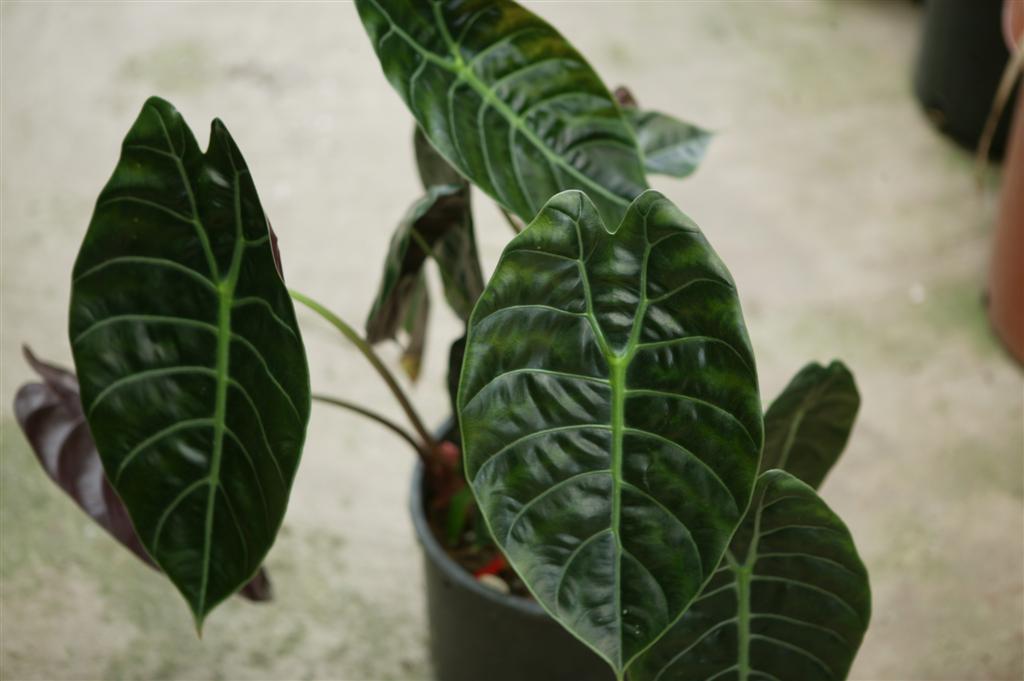
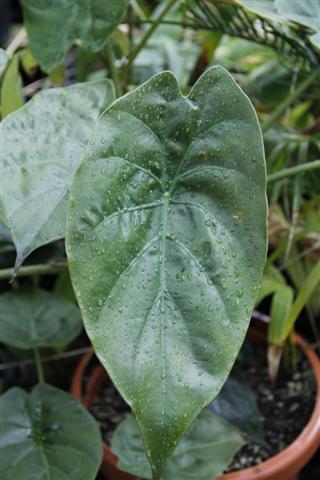
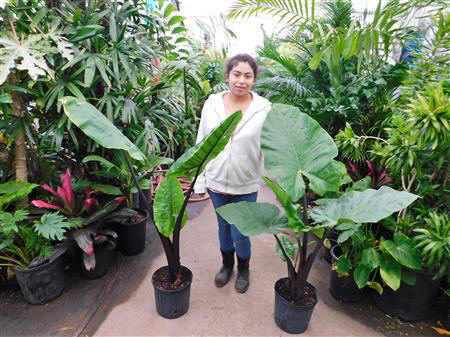

COLOCASIA – ANOTHER EXOTIC TYPE OF TROPICAL FOLIAGE
Colocasia is a group of plants very similar and often confused with Alocasia. These are known for their leaves not flowers. Many have difficulty with cold temperatures but they are strikingly beautiful. All tend to be smaller, clustering plants. They also like plenty of water and good drainage. Leaf colors are typically green to black with an occasional hybrid with some red. Included in this group is the sought after “Black Magic”, as shown below. This hybridized species can have leaves that are almost black in color, blue on the underside of the leaves. We’ve found that, over time, plants tend to decline in Southern California gardens. So, if you like them, realize they may have to be replaced every few years.
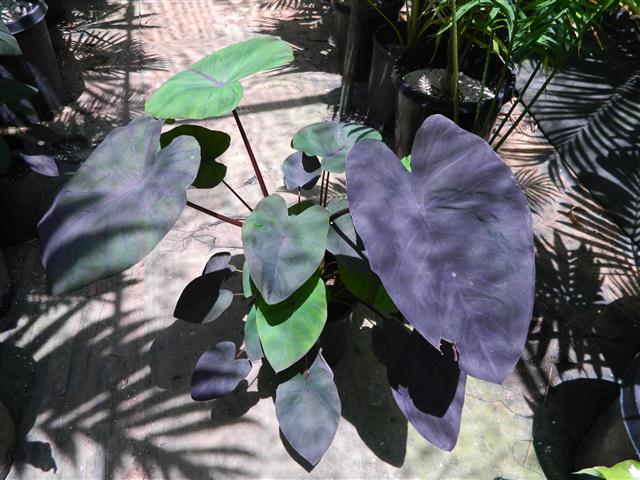
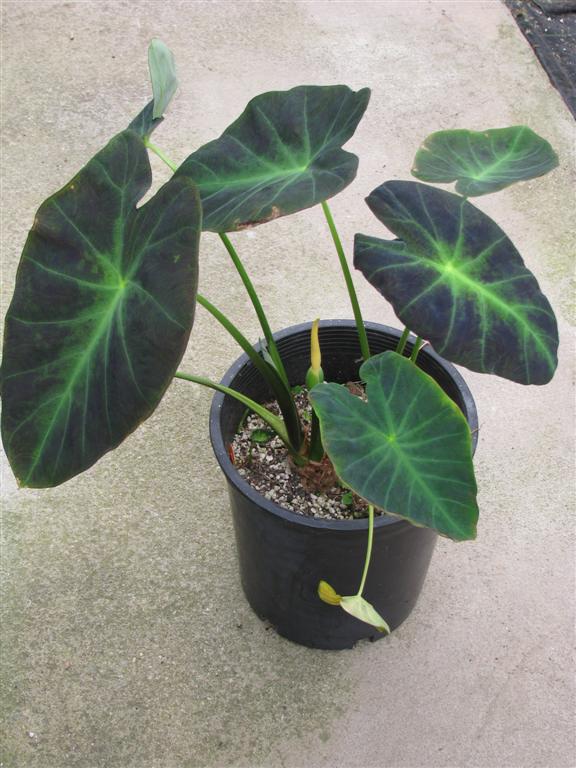
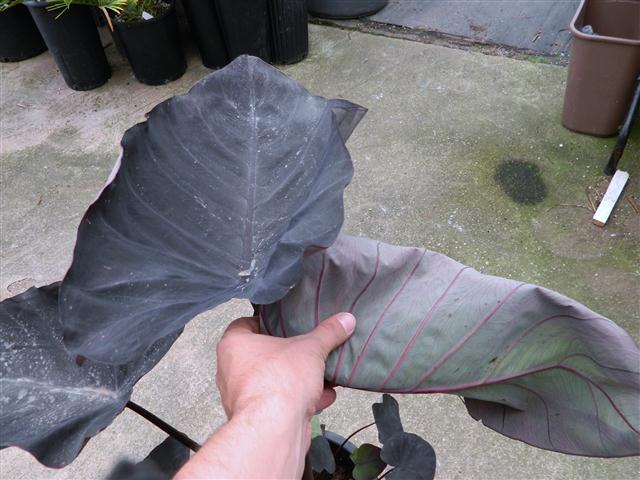

PHILODENDRONS – ROSETTE AND CLIMBING VARIETIES
SOME VERY COLORFUL
This is a group of tropical foliage plants that typically take on two forms: rosette (confined) or climbing. The first group form a smaller plant that doesn’t crawl along the ground. The second group put out growths that crawl the ground or can grow up palm trunks, fences or structures. Most Philodendron prefer filtered light or shade. The climbing type can be propagated from tip cuttings. This group of plants is more known for their foliage than for any blossoms they might have. There are quite a few species that thrive in Southern California. Shown below are some hybrid varieties that display red to purple to even orange leaves. The super colorful species tend to have less cold hardiness.





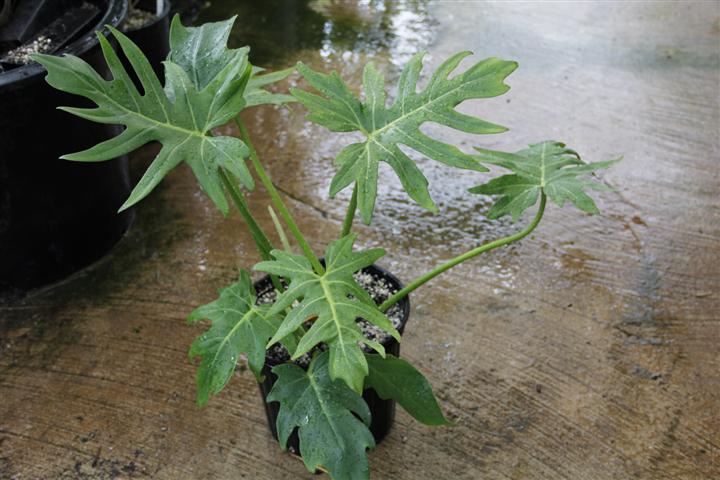
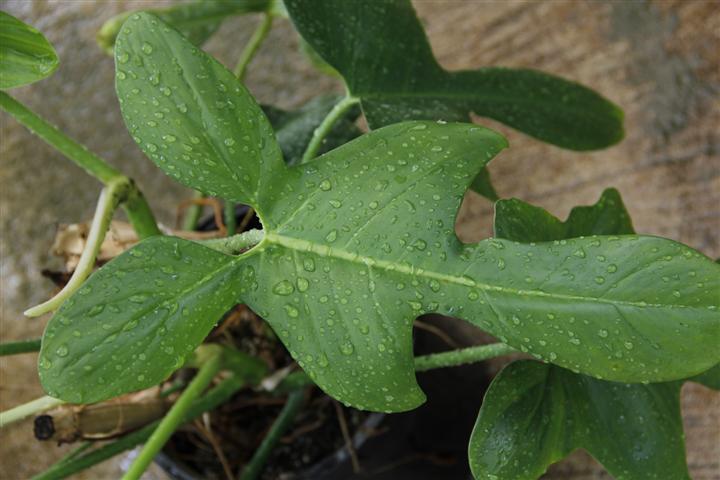
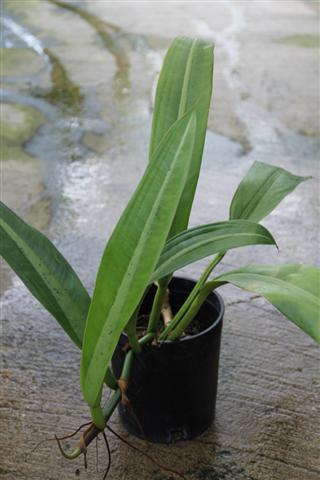
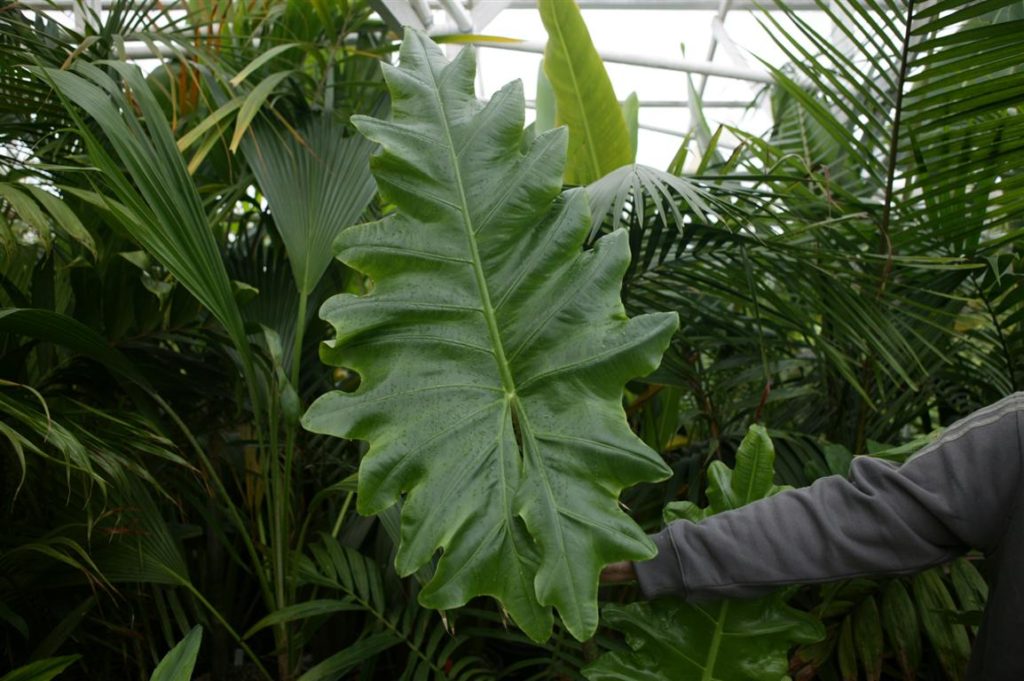

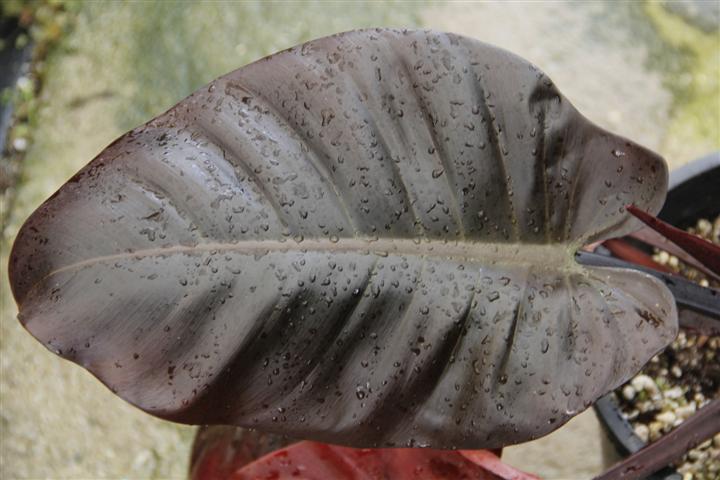


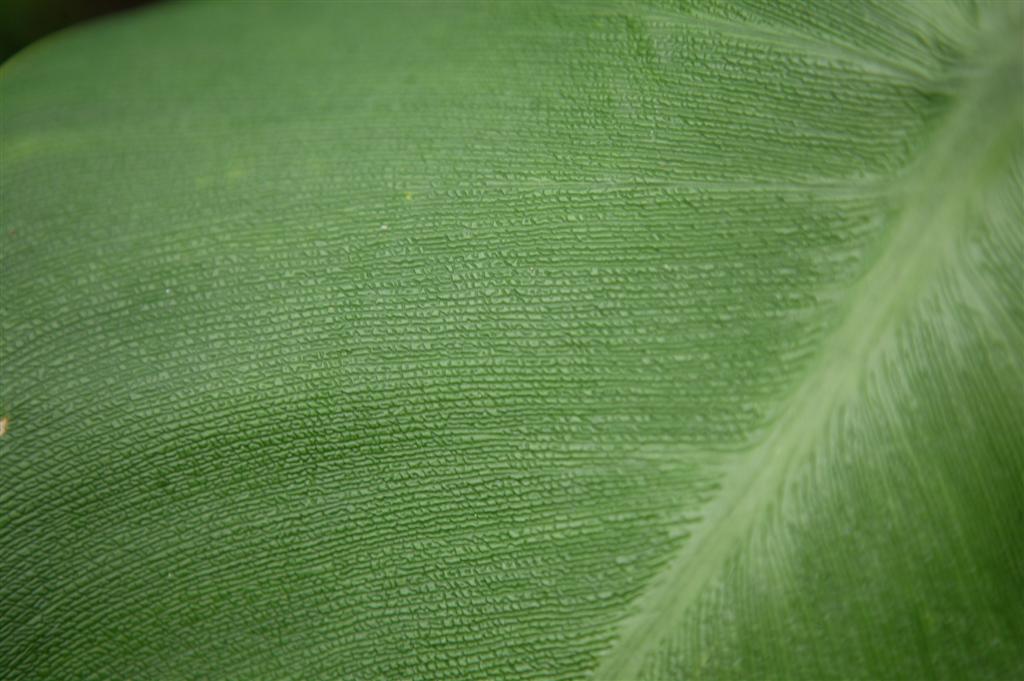
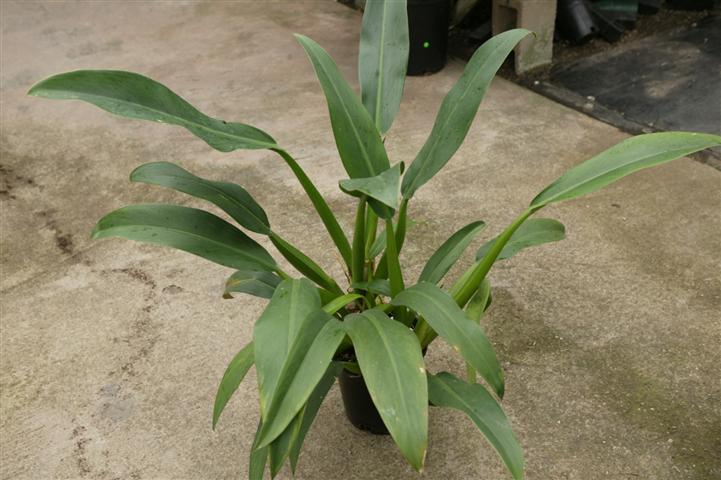

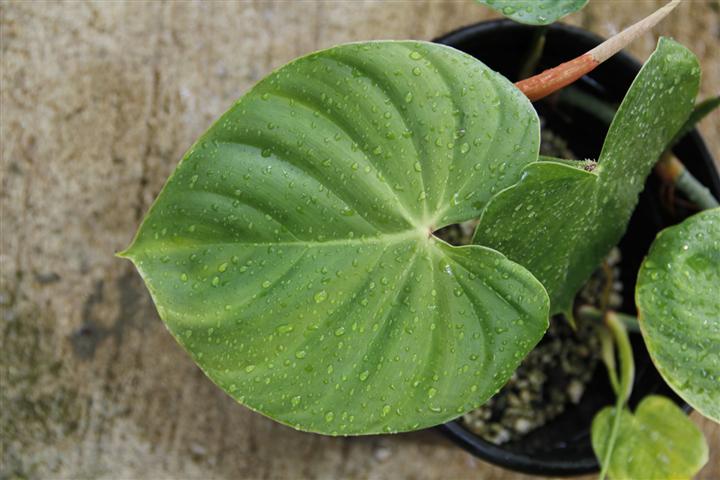
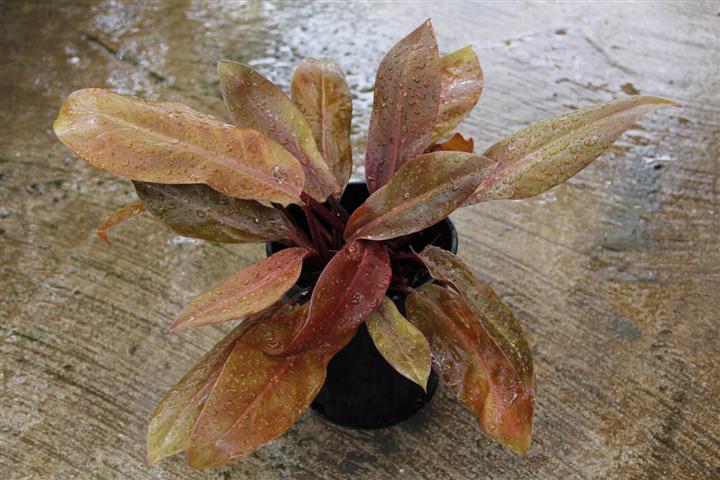
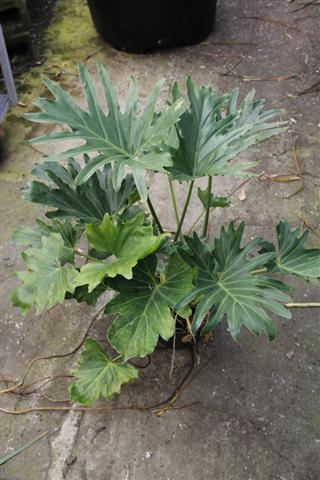
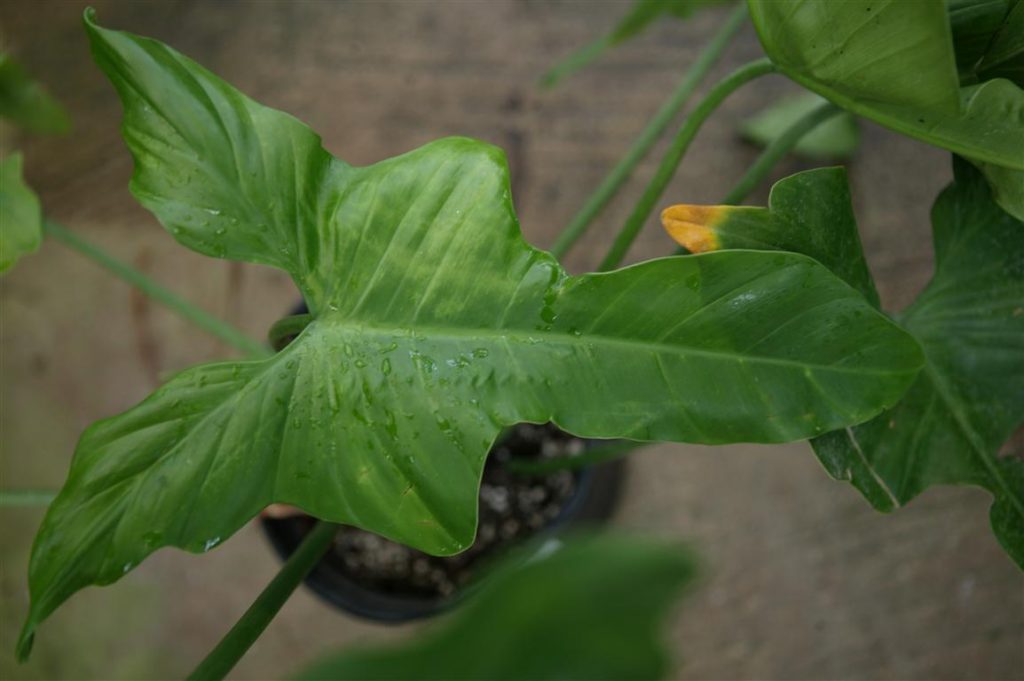
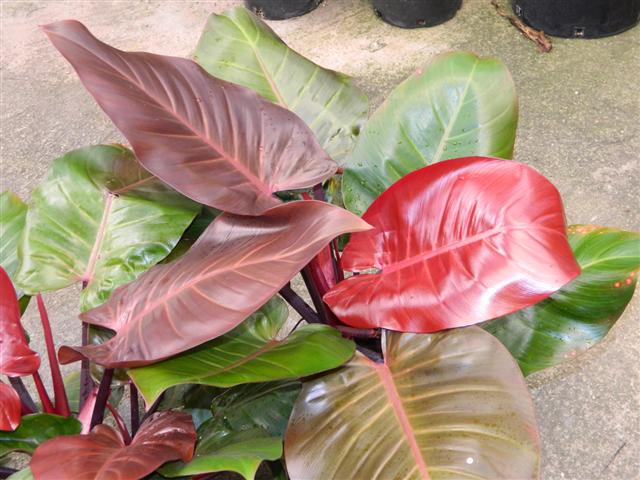
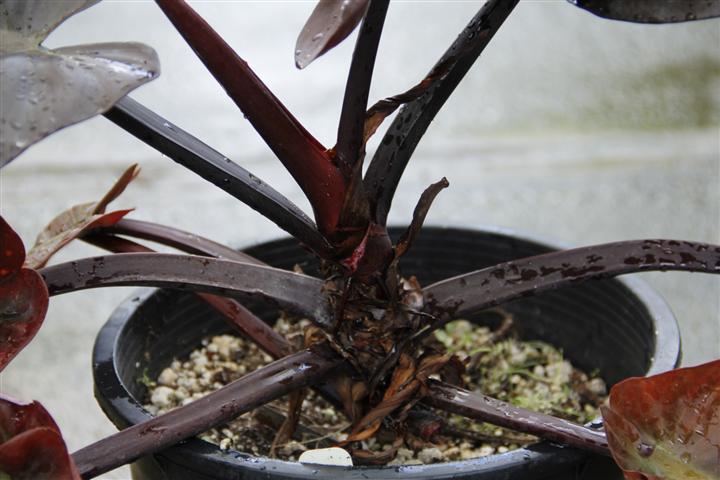
EXOTIC ZAMIA CYCAD SPECIES – ENTHUSIAST FAVORITE
Zamia is a genus of cycads that are native to Mexico, Central America and South America. They tend to be lush, green in color and exotic appearing. Some have red, bronze or pink emergent leaves. Some have plicated (deeply grooved) leaves with a rough surface reminding one of the Pringle Potato chip. Most prefer filtered light and are of a smaller size. Many are sensitive to frost or freezes. All like good draining soil. If you can grow any of these rain forest plants, they are definitely a great addition to the garden. As with any genus of cycads, they are very rare and tend to be more expensive than other tropical plants. Shown below are photos of a few of these wonderfully beautiful plants.
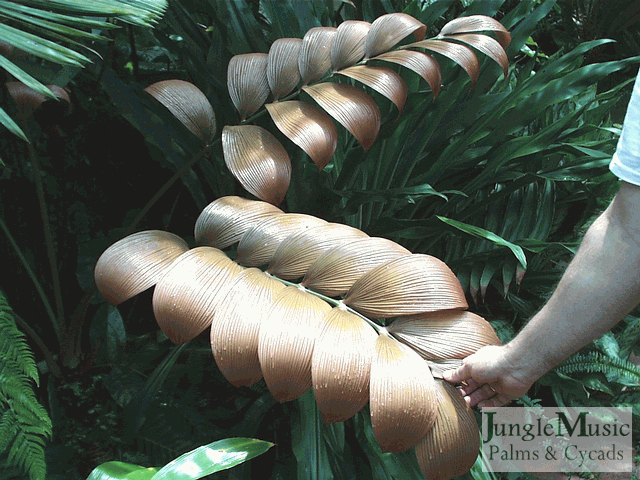
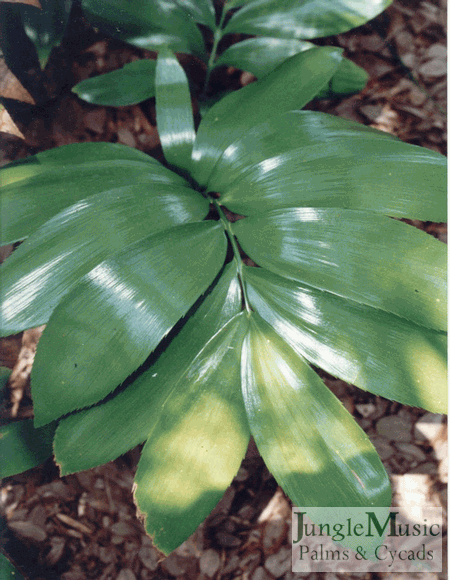
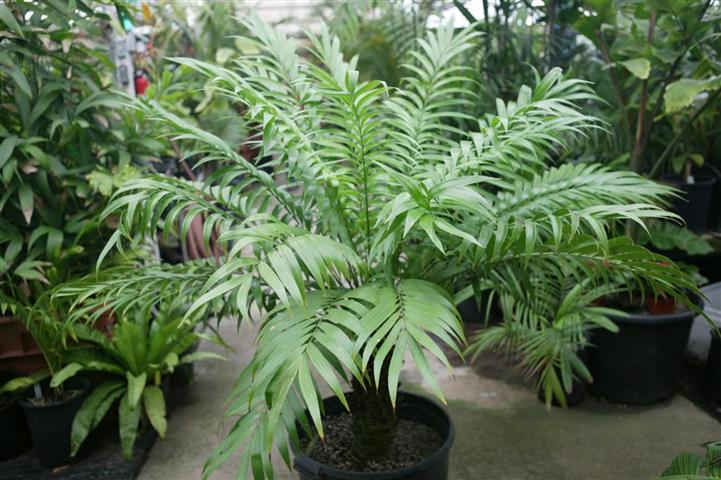
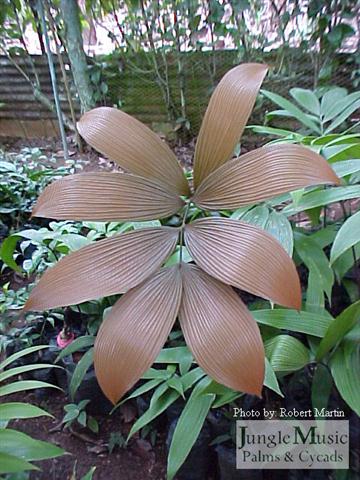

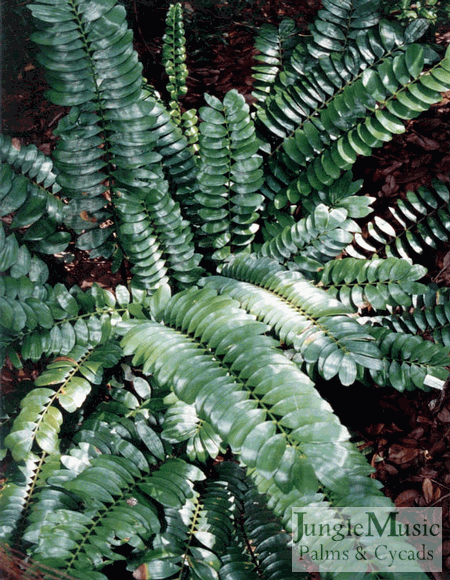
BROMELIADS – COLORFUL, SMALL, GREAT GARDEN COLOR
This group of plants are sometimes called “air plants”. This is because most are epiphytic plants (live on other plants without hurting the host plant) and can survive with only rainwater in the wild. This thread deals more with the larger Bromeliads that can be planted into the garden floor. For more on Airplants, see below. There are avid collectors of these plants and many species and varieties are known to exist. We’ve found that Neorogelia are quite accommodating to the garden because they give color in shady locations and need minimal care. But, Vrisia and Aechmea are quite nice as well.Bromeliadsd tend to be easy to grow smaller plants. But, there’s a few that can attain a three foot width to their leaves. And, some will get four feet tall. Many have stunning and colorful blossoms. The clustering Neorogelia below takes coastal sun, which makes it even more red. It is possible to get hybrids in brilliant red, pink, orange and yellow. Guzmania and Tillandsia are other types to consider. We often have large clusters of Tillandsia. Also, when available, the Vreisia imperialis is quite striking and of good size (photo bottom left, purple color). Along with the Ti plants, Bromeliads are among the more colorful tropical plants. One final point: We get in colorful Bromeliads all the time – so our inventory is rapidly changing.
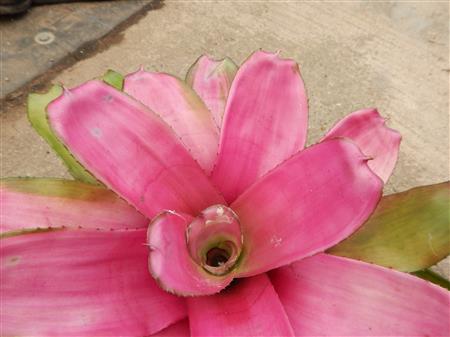
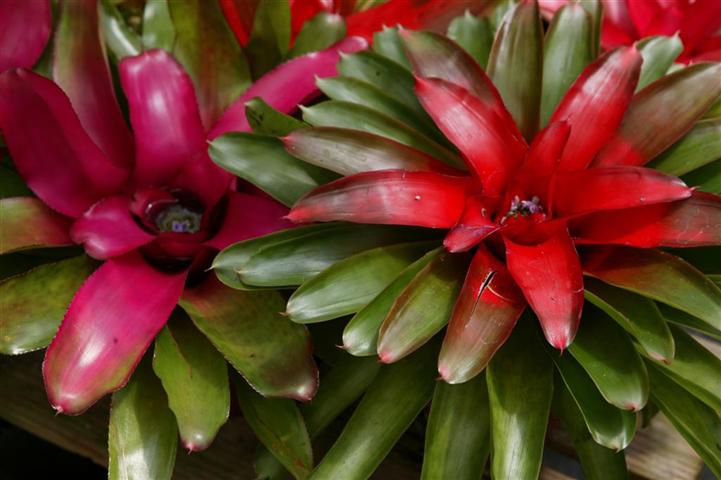
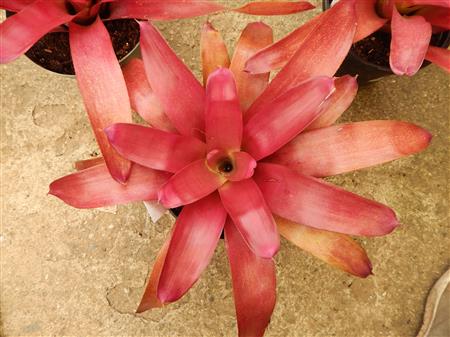

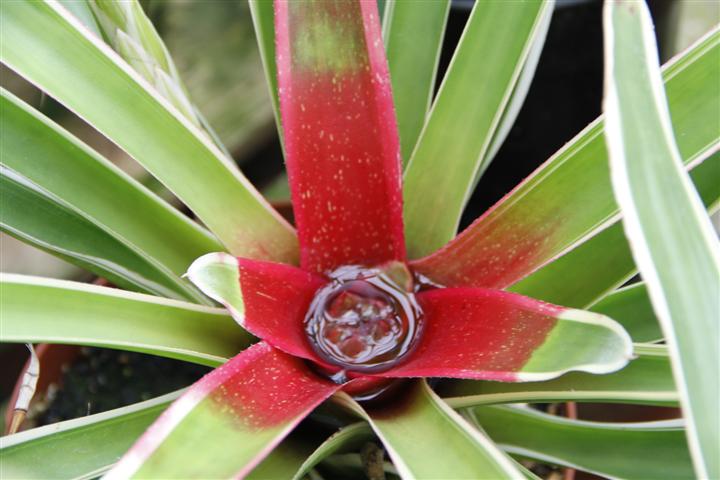
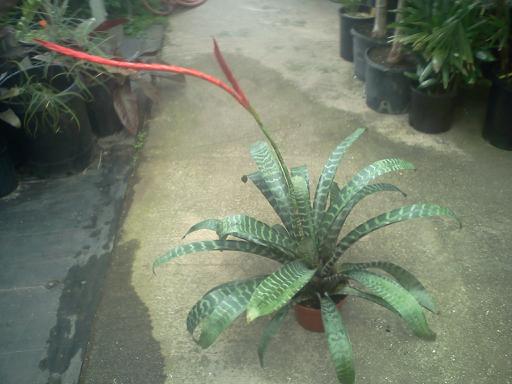
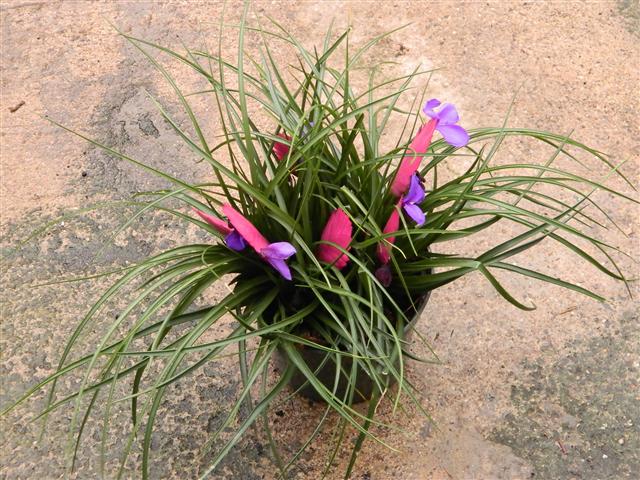


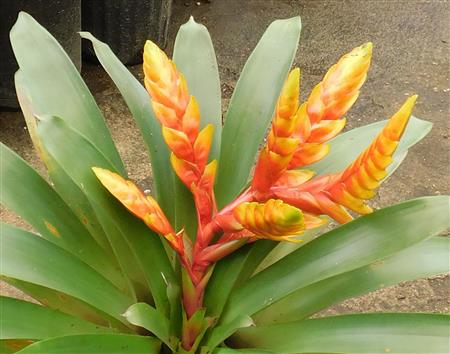

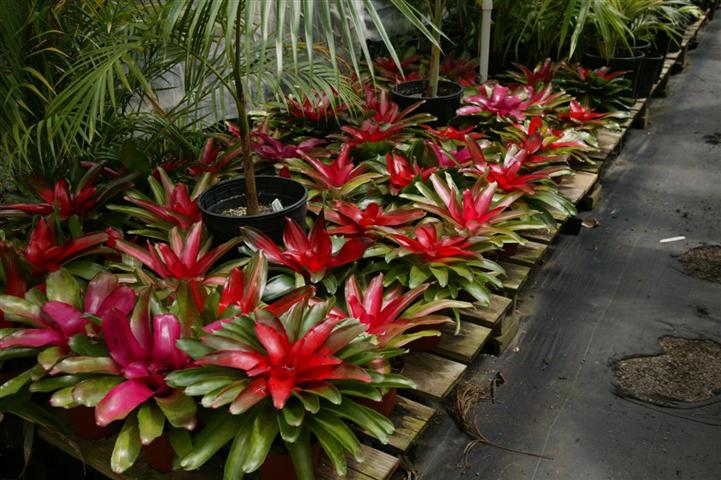

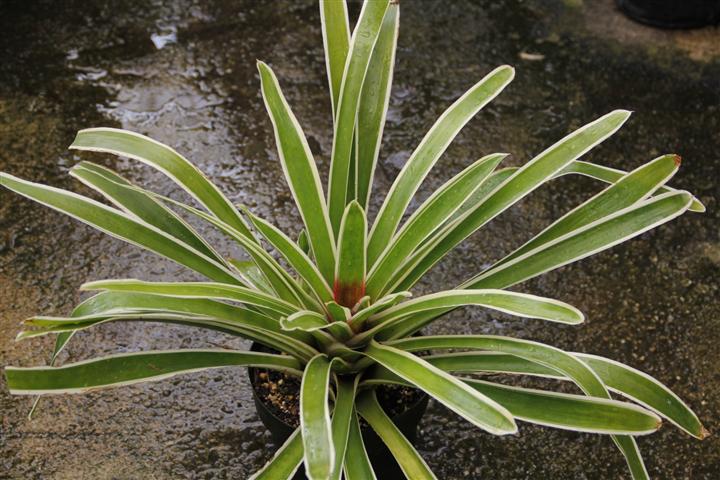
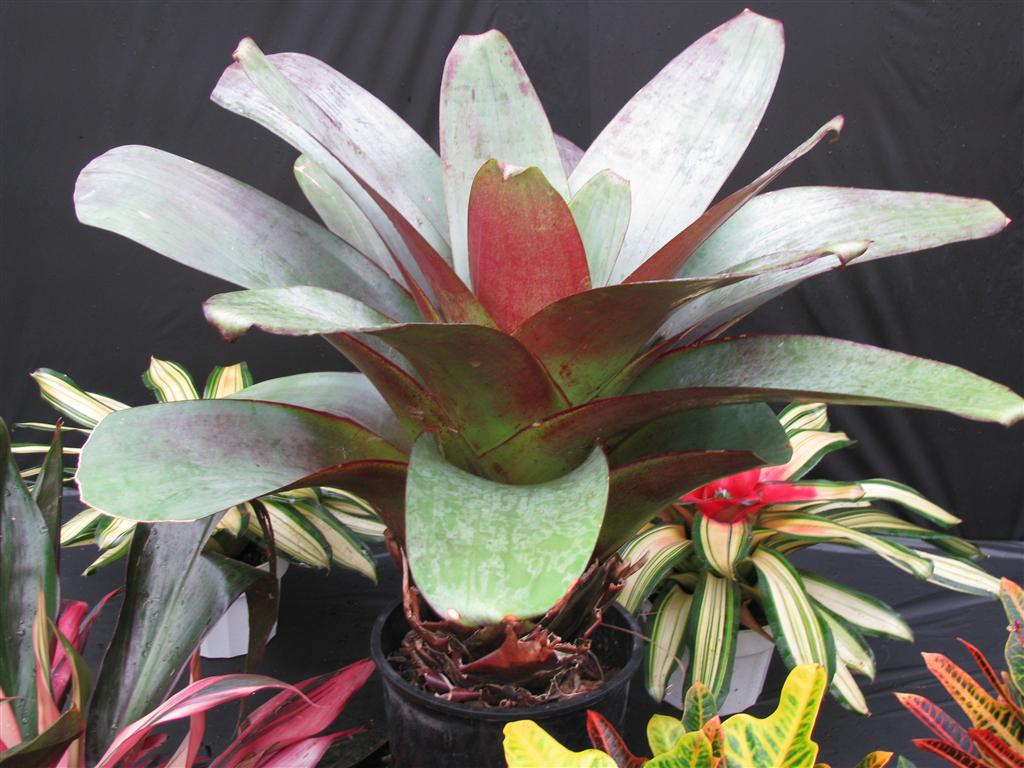
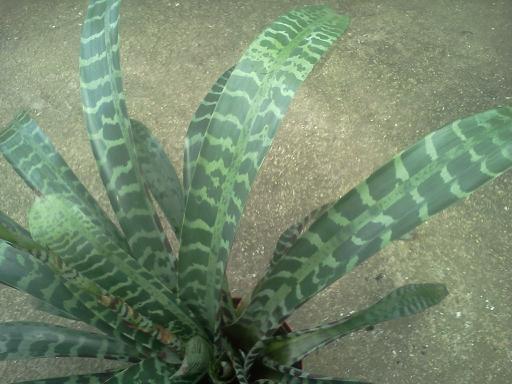
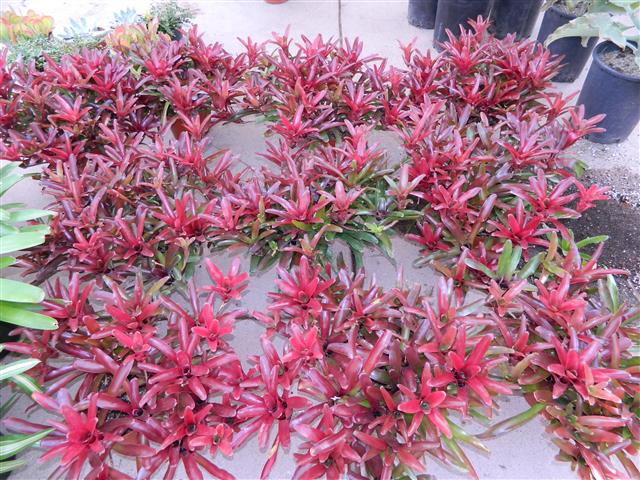

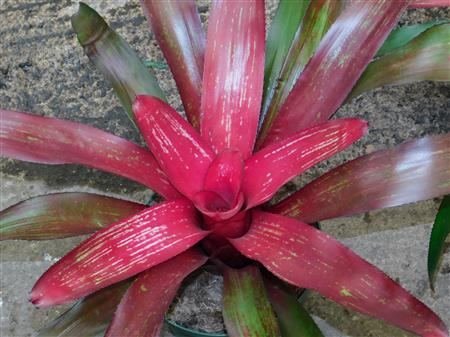
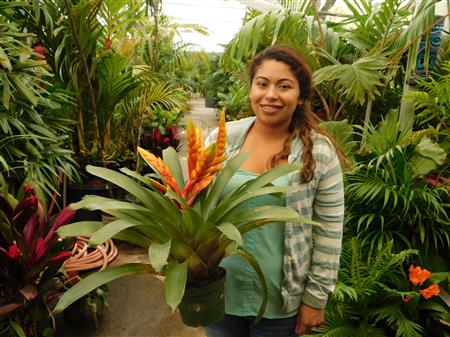
BROMELIADS – AIRPLANTS
TILLANDSIA SPECIES
All the “Airplants” are typically species of Tillandsia. These bromeliads tend to be smaller but still put out very nice blossoms. They are super easy to grow and can take sun in many areas or filtered light. They can be attached to tree trunks, posts or fences. All they need is an occasional spray of water and some fertilizer (liquid spray) applied every few months. They are really easy to grow. We often mount them on a piece of wood but also carry free-standing clusters as shown here. Our selection is usually pretty good on these plants.
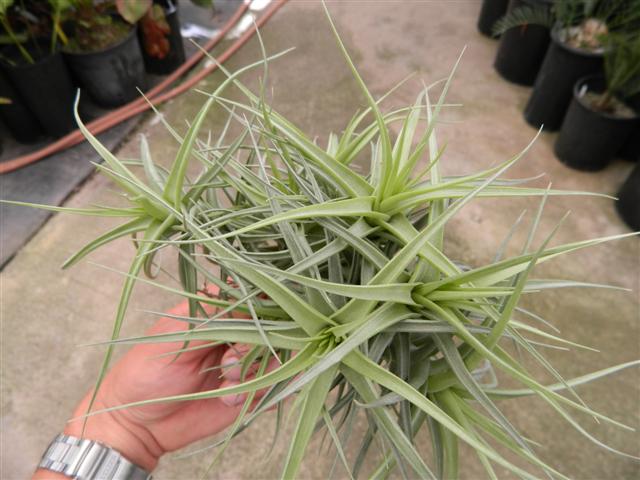
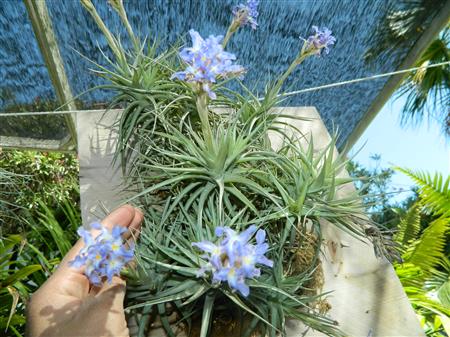
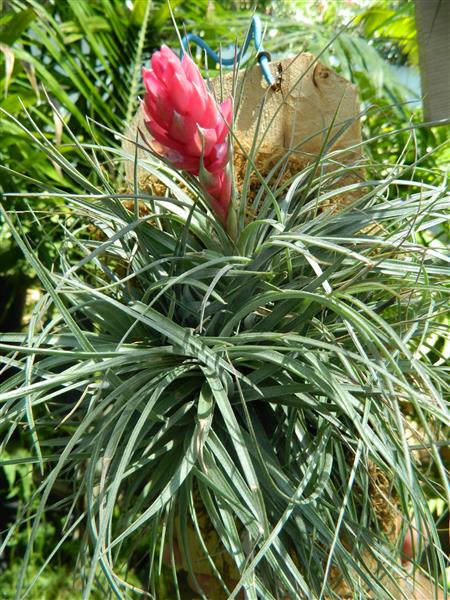
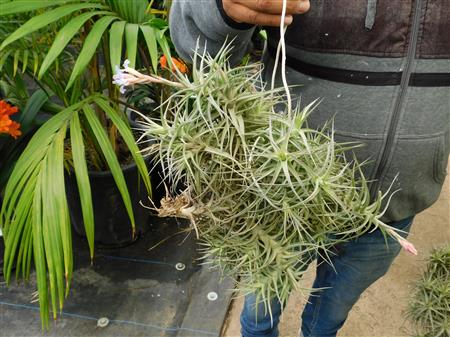
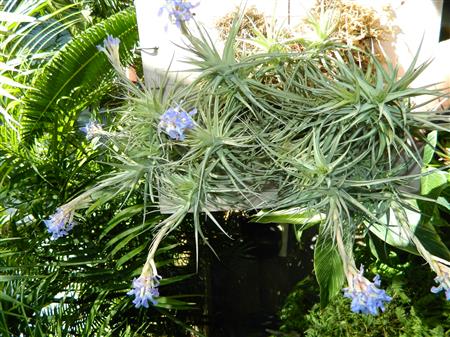
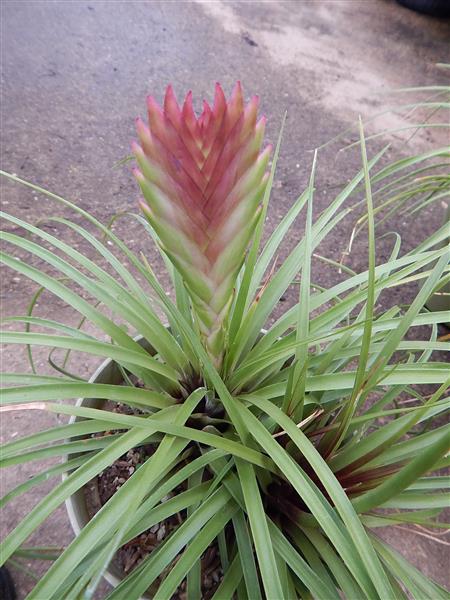
JACOBINIA CARNEA (JUSTICA C.) – BRAZILIAN PLUME, FLAMINGO PLANT
We’ve been growing these plants for a while and really like them. This exotic filtered light dwarf plant puts out clusters of huge flowers. This variety is pink but they also can come in red, apricot, orange, yellow and a whole assortment of other colors. They typically get to a height of five feet or less and throw long lasting blossoms. See how beautiful they are below. They bloom spring to summer. Along the coast they can take full sun. Cold hardiness is into the twenties F. Plants are about as wide as they are tall and make a wonderful and colorful addition to the garden floor. You’ll not see this plant around too much and it’s a way to add color to shady areas in the garden.

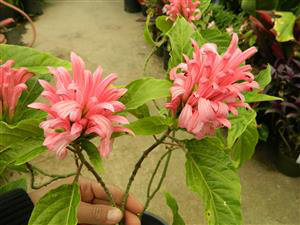

FICUS DAMMAROPSIS – EXOTIC LARGE LEAFED BUT SMALLER TREE
This exotic tree is exceptional for many reasons. First, it has huge leaves that can be as long as three feet and two feet wide. It also has pleated leaves as shown and has red veins. The tree itself surprisingly doesn’t get that big, perhaps fifteen feet or a bit more. Trunk diameter is almost always below six inches. By pruning, one can create a shorter, more full tree. Or, one can let the primary trunk get tall and overhead. Culturally, this species tolerates coastal sun and can take strong filtered light and is cold hardy into the 20’s F. It is almost impossible to find. Although presently out of stock, we occasionally get in several plants. Call for our present availability. BTW, Ficus as a group tend to be large trees, but not this species. This species will not form buttress roots or have invasive roots as far as we know.. Last photo by M.B.
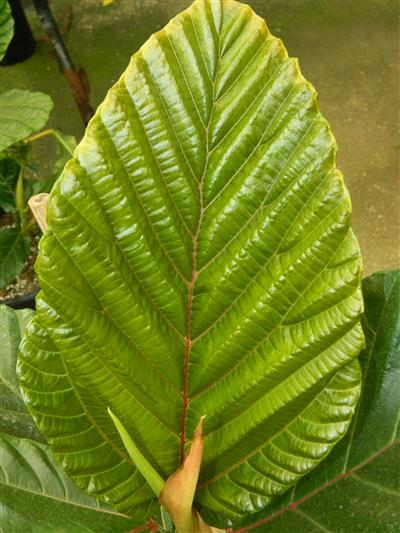
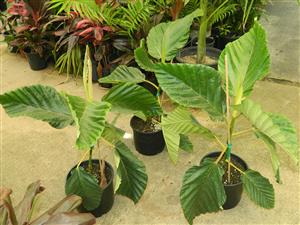
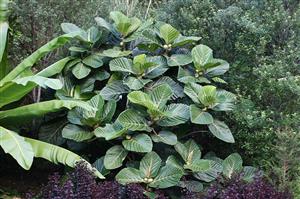
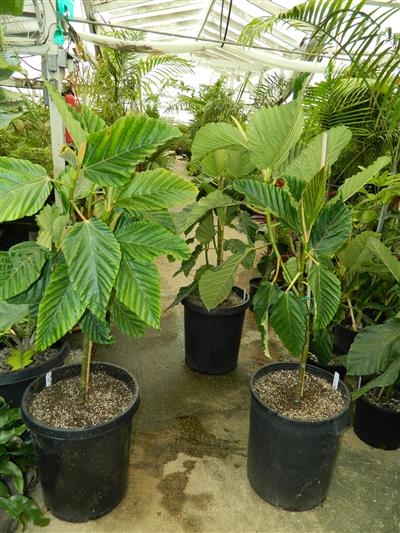
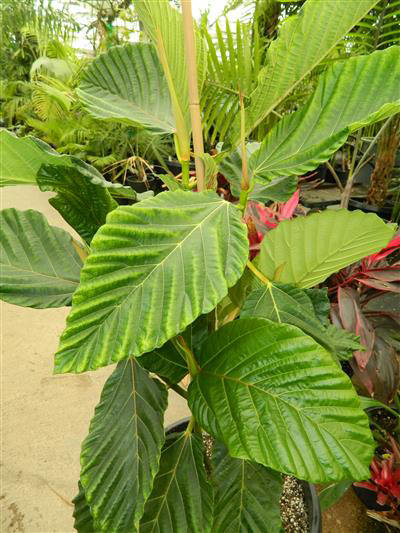
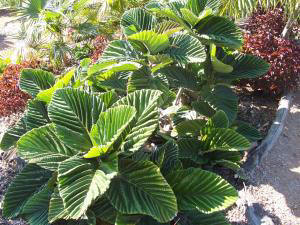
RAVANALA MADAGASCARENSIS, THE TRAVELER PALM
This plant is known by many but most think it’s a palm tree – It is not actually a palm at all. It looks like one but is more closely related to banana or Birds of Paradise. It is unique in that the foliage grows in one plane, i.e., it is flat plant when looking from one side. It is quite common that people visit the tropics and see this unusual plant and call us to see if they can get one. The Traveler Palm is not particularly cold hardy. It prefers sun. If you get colder than 32 degrees F., it is a risky plant for you. Also, there is the wives tale that plants should be planted East-West to maximize sun exposure. We usually have some sizes available

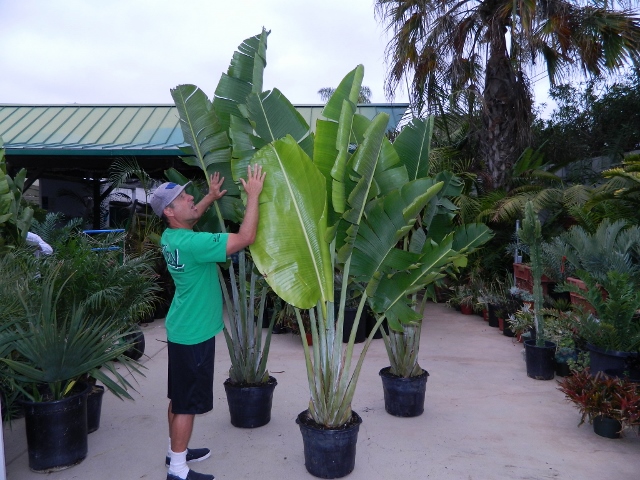
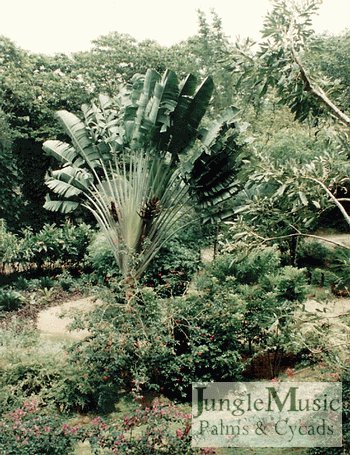
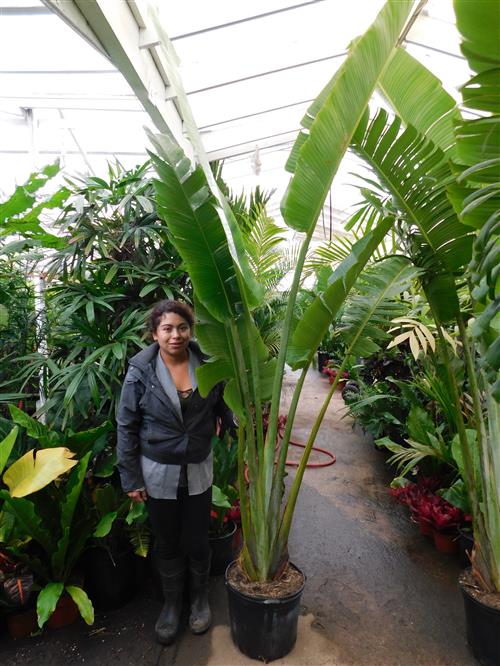
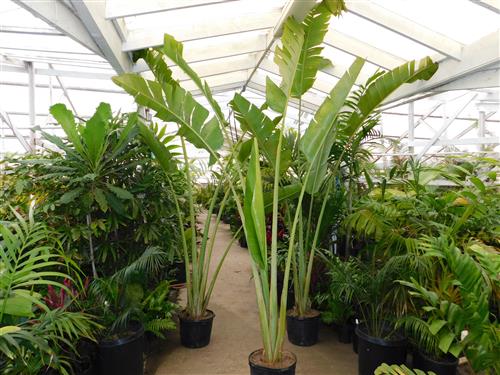

FERNS – WATER LOVING, MANY TYPES, USUALLY FOR SHADE
Ferns are a group of plants that typically prefer filtered light and like humidity and water. They make ideal companion plants, easily fitting between larger plant species like palms. There are many forms and varieties of ferns including some that even make trees that are over 30 feet tall. These taller ones are typically a type of “Tree Fern”. There are also very ornamental smaller plants. Ferns tend to like moist conditions with adequate water. Like orchids and Bromeliads, ferns can be grown in trees. The Birdsnest Fern below was mounted into a tree along with epiphytic orchids. The Brentwood Tree Fern in the picture below is my garden and has over 25 feet of trunk. From time to time we Brentwoods available. We also have a great assortment of different, rare varieties and species.
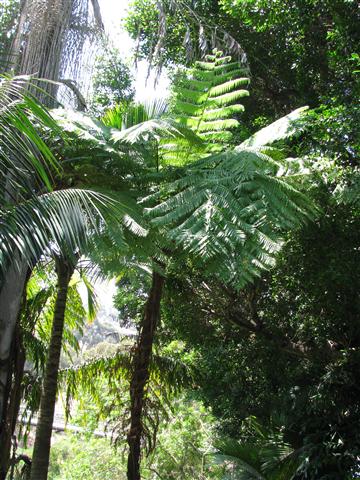
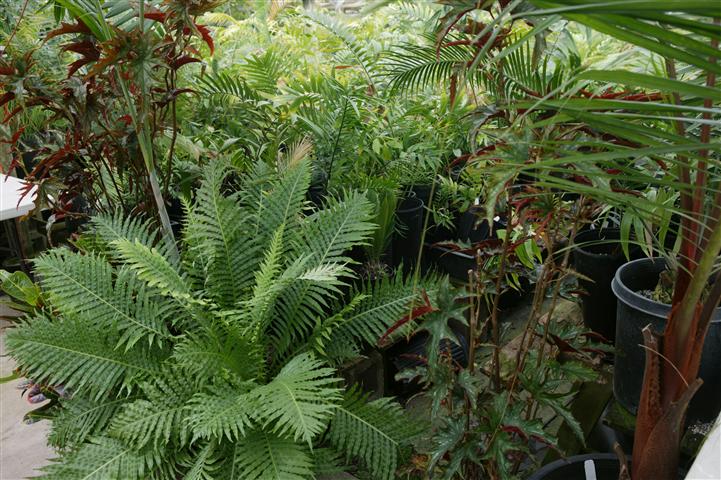
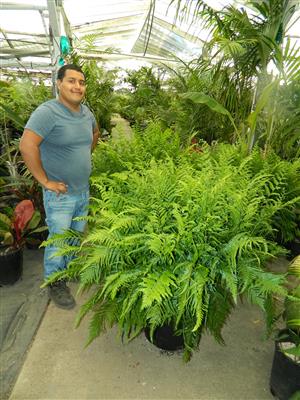
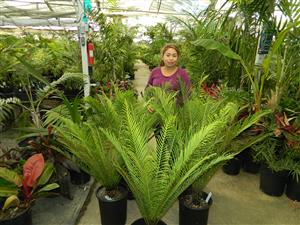



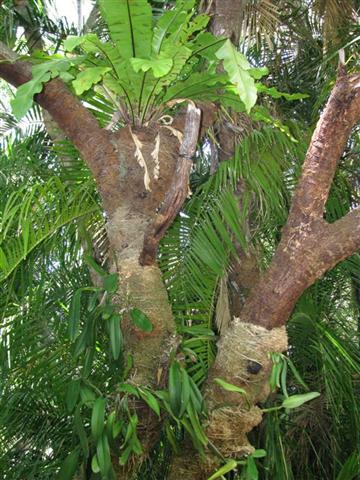
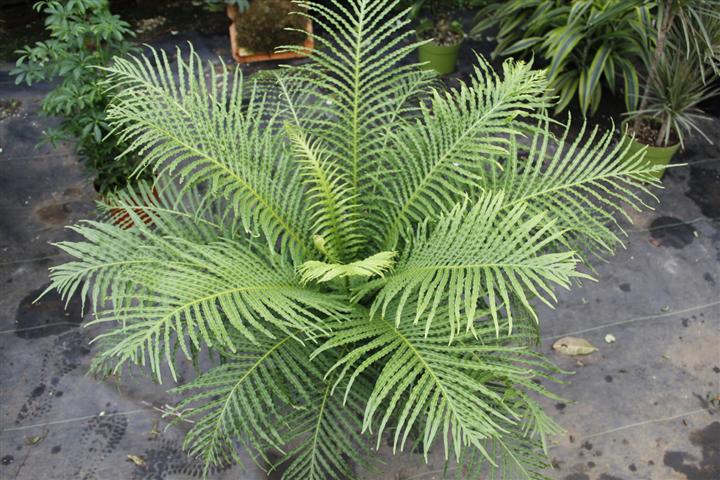
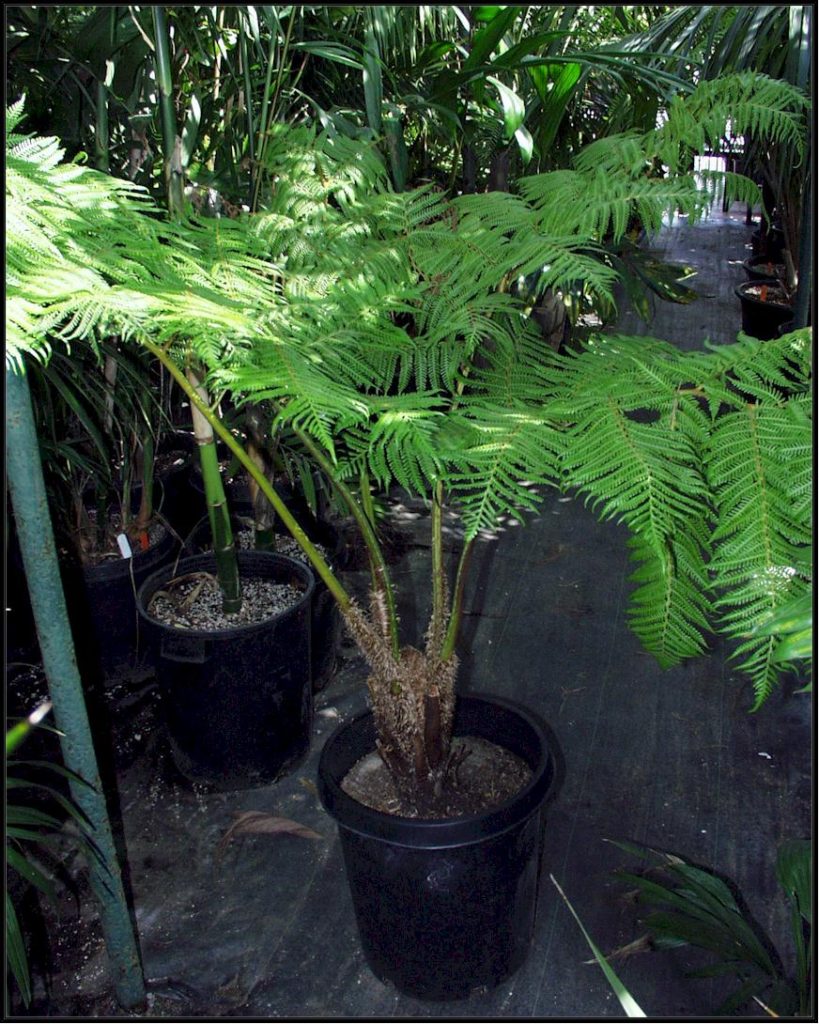
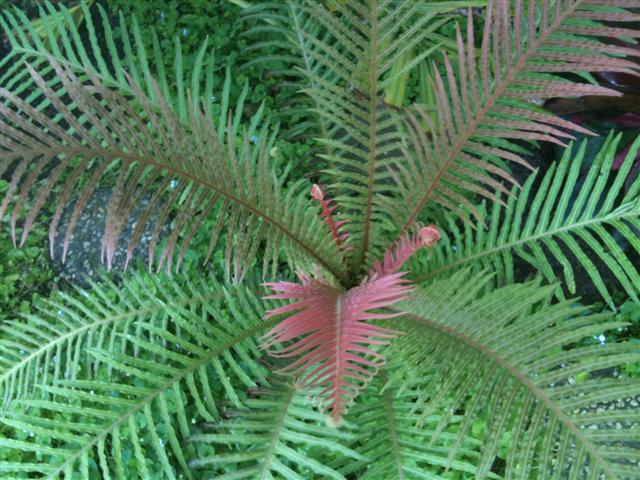

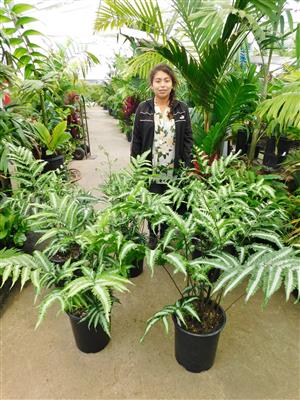
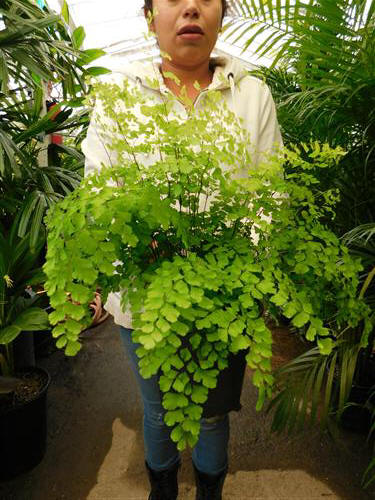
CROTON: COLORFUL, MEDIUM SIZED, EXOTIC
Crotons are colorful tropical plants with either thin leaves or broad leaves, but typically bright colors like yellow, orange, red, etc. They like warm conditions and are susceptible to cold. They are native to Asia and the tropical islands. They are extremely popular in tropical areas because of their vibrant colors. They are typically smaller plants, hardly ever over six feet of height. They can be used as house plants. For those of us in Southern California, the main threat is a cold winter which causes leaves to discolor, droop or fall off. We do intermittently carry a variety of Croton but try to warn customers about the cold threat. As far as rainforest plants go, the Croton are unequaled for tropical color.
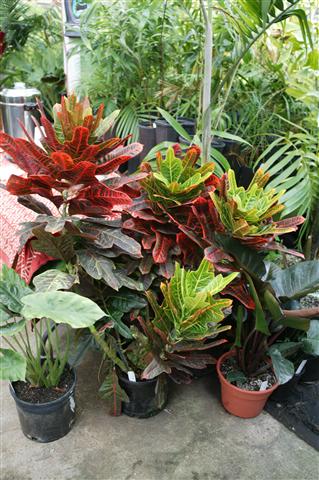


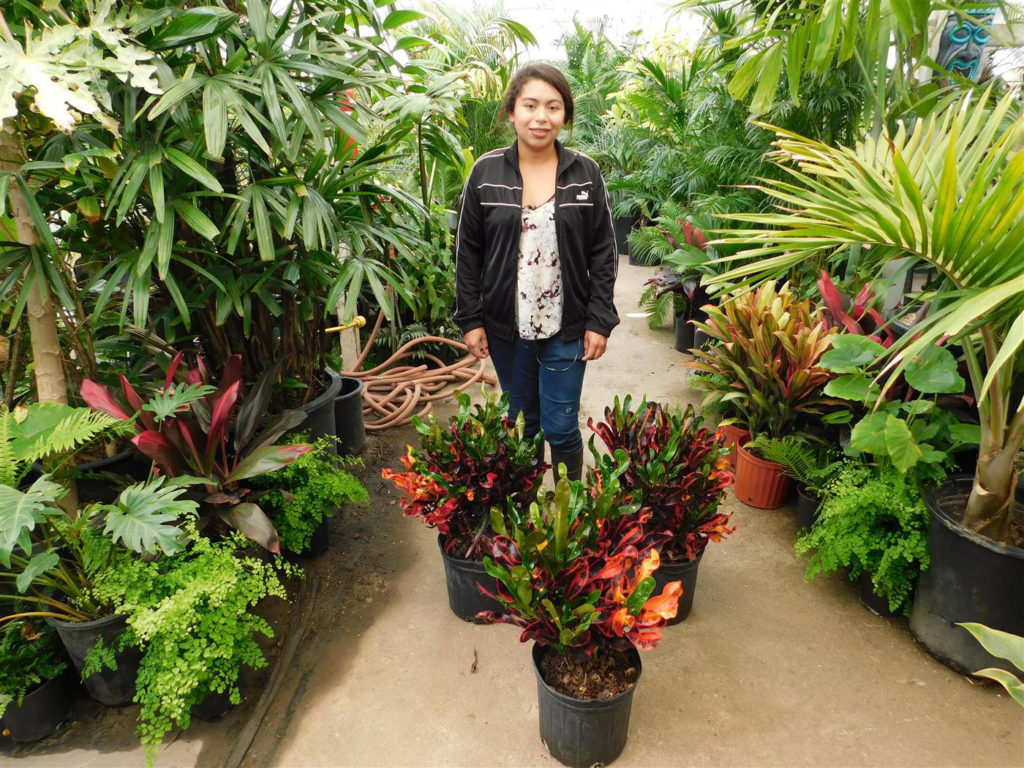
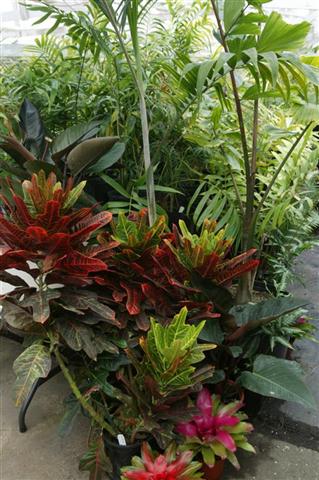
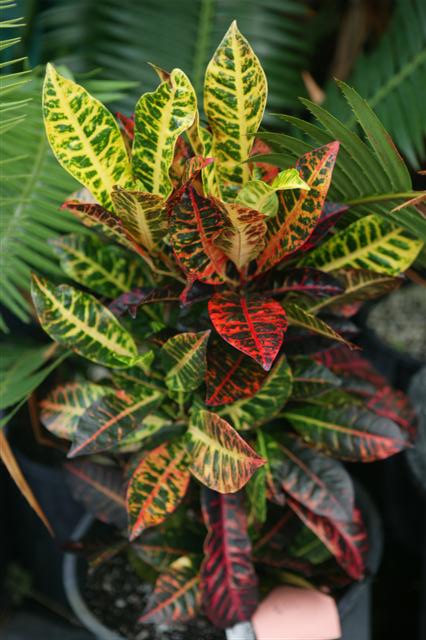
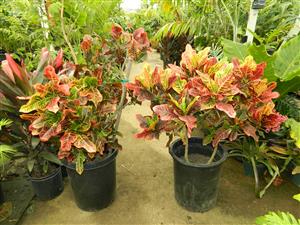
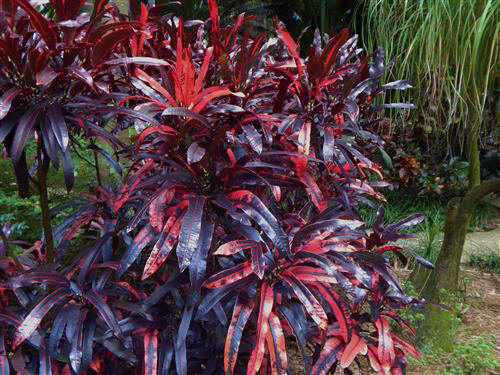
STROBILANTHES DYERIANUS – THE PERSIAN SHIELD – DWARF, SUPER PURPLE
Native to higher elevations in Burma, this broadleaf evergreen has a deep purple color and never gets over about 24 to 36 inches tall. It prefers filtered light. Leaves are a bit iridescent and shiny. It prefers water. Size can be kept compact by pinches stem ends to add fullness. Most grow this plant in filtered light where it’s another way to add color in shade. But, right on the coast, it can take sun. It is frost sensitive. We have these available from time to time.
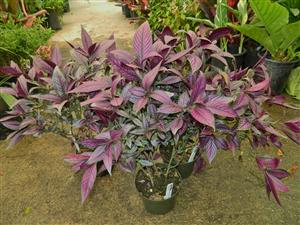


DURANTA “SAPHIRE SHOWERS” PLANT
This “plant” can become more like a tree with an upright growth habit getting to twenty feet. But, by pruning, you can keep in short and compact. It has hanging clusters of purple and white flowers almost an inch is size. Berries are orange in color and you can get both flowers and berries at the same time. Blossoming time is summer. It prefers sun and is cold hardy into the mid-twenties F. or lower. Shown here is a rare variegated form
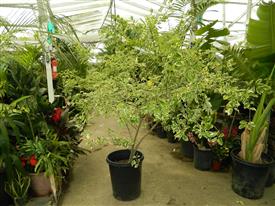

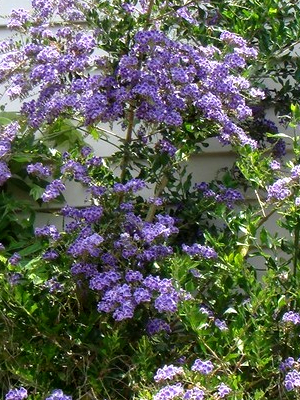

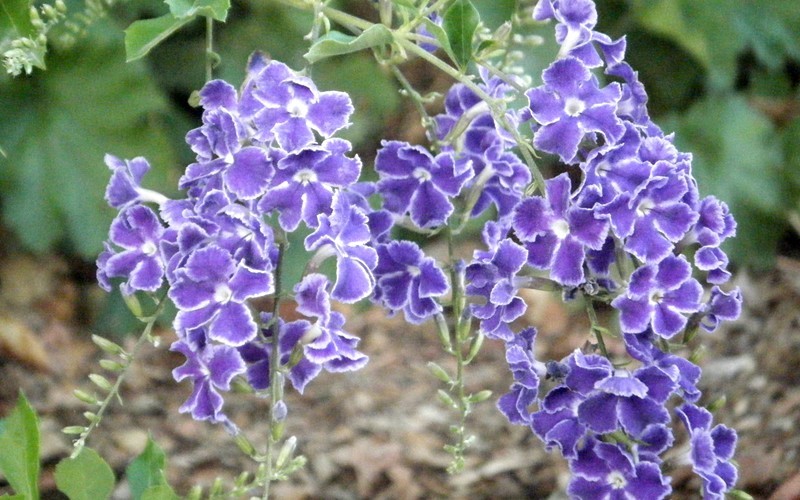
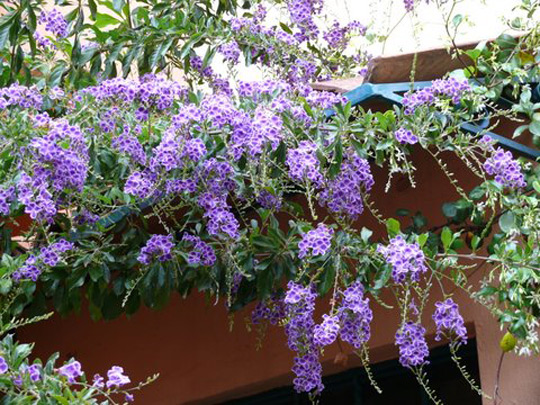
EUPHORBIA CONTINIFOLIA, THE CARIBBEAN COPPER PLANT
This plant takes on a tree like appearance but is small, typically ten to fifteen feet in our area. It has copper-purple colored leaves and yellow blossoms. It maintains a small vertical trunk and can be shaped by pruning. The garden photo shows a plant that has been pruned to stay close to the ground. Cold tolerance is about 25 degrees F. It wants full sun
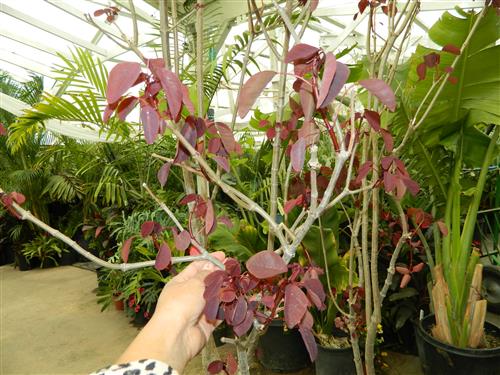
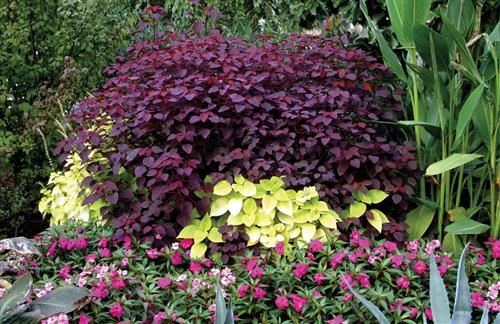
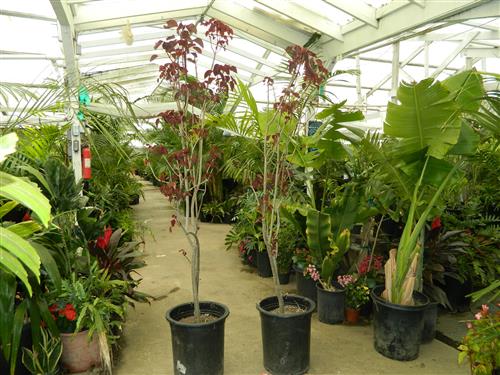
CLIVIA, THE NATAL OR BUSH LILY
These evergreen plants are small in stature and native to South Africa. There are multiple species. A big difference among the species is the time of flowering. In California, most plants flower in the early spring. Flower colors range from yellow to orange and red. In fact, they’re one of the first things to blossom in the spirng. Hybrids do exist. Plants have strap like, thick leaves and overall height is usually under two feet tall. They prefer filtered light and don’t do well in full sun. In a colony, these plants put out a great display of color that lasts for about a month. They are cold hard into the lower 20’s F. The last photo shows the yellow type, quite hard to find in nurseries
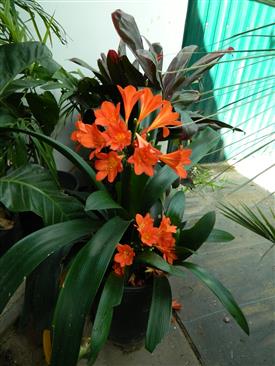
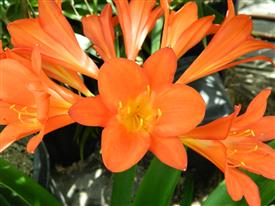
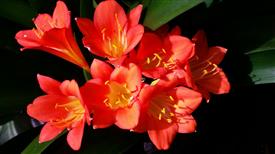
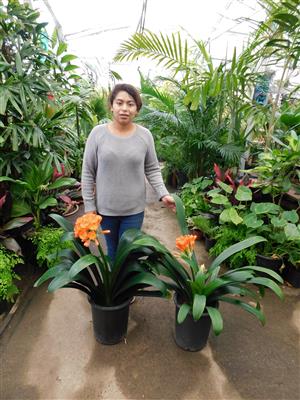
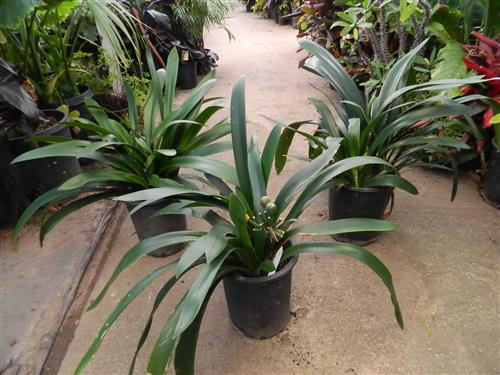
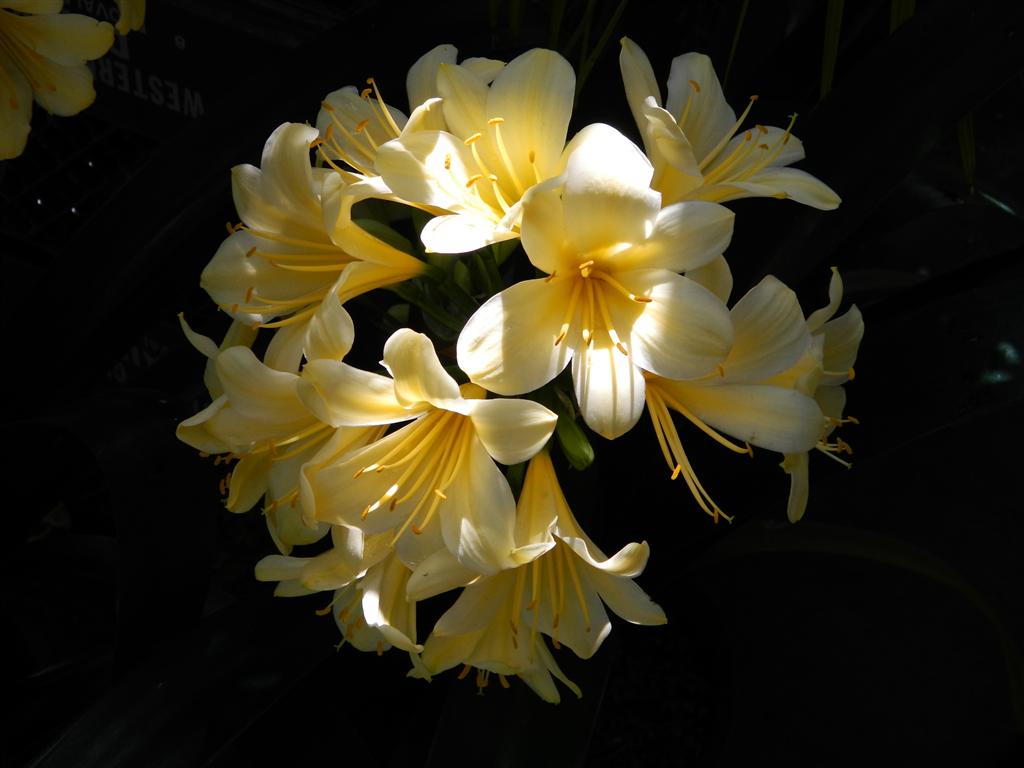
DRACAENA DRACO, THE DRAGON TREE
Dracaena are a type of plant that is popular as a houseplant. However, there is one species that makes a magnificent tree: Dracaena draco. It becomes a blue gray tree that branches and gets to about 20 to 25 feet when totally mature. People do underestimate how large this tree can get – well above the house in a few decades. The foliage and the shape of the leaves are its hallmark. Leaves are blue and the tree’s limbs are abundantly forked. From time to time we carry nice Dragon Trees in 25g or 24 inch box sizes. The trunks are very beautiful. They don’t require a lot of water and enjoy heat. They can fit into a tropical garden or a succulent garden and really look at home.
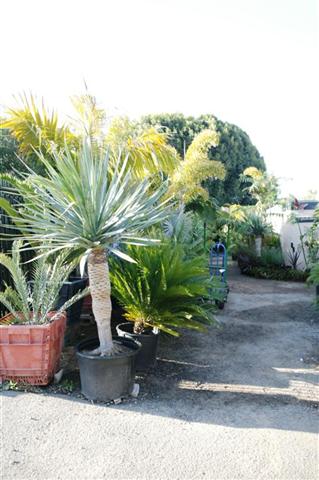
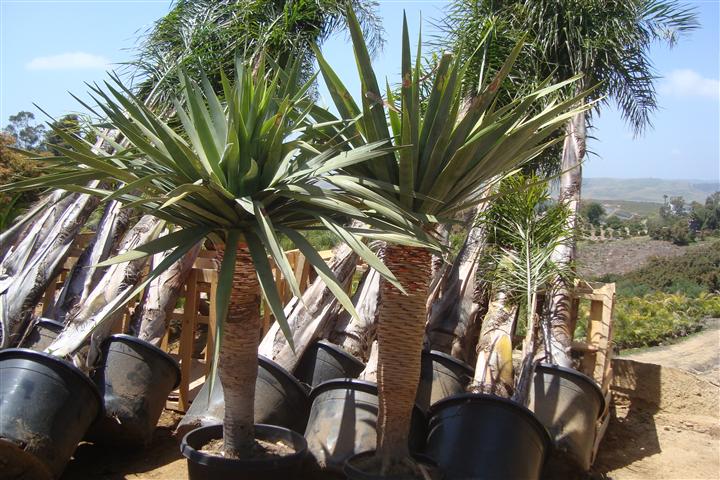
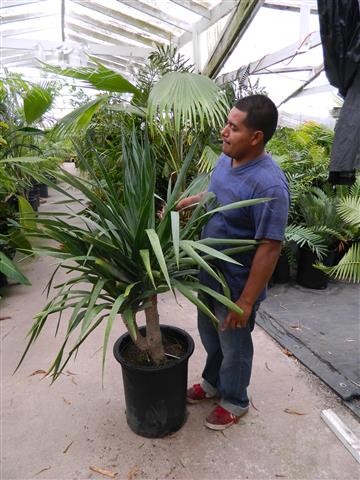
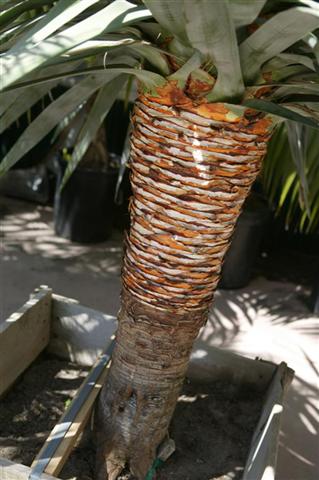
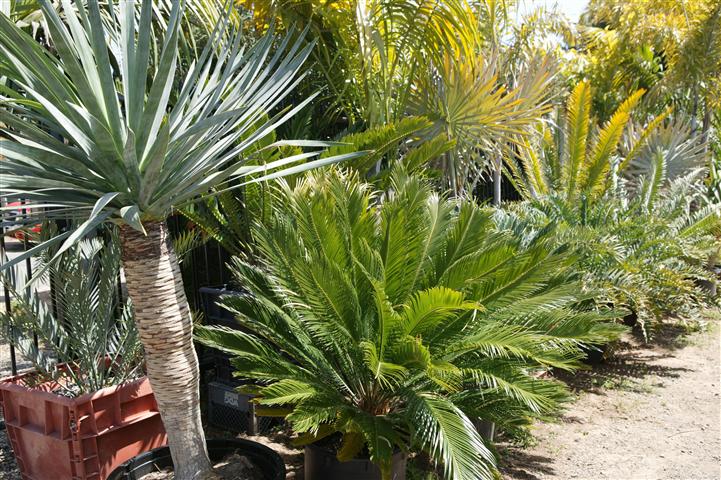

ANTHURIUM: SOME FOR FLOWERS, SOME FOR THE FOLIAGE
As a group, Anthurium is a diverse group of plants known for either their blossoms or foliage. The most common type are the ‘boy flowers” which are commonly seen in blossom at general purpose nurseries. Far more interesting are some of the plants more known for their foliage. There are terrestrial bush forms of Anthurium as well as epiphytic plants that natively live high in the canopy and have hanging aerial roots. Many people will include these plants in the general group called “Aroids”. There are many species which make great companion plants with their unusual tropical leaves. Below you’ll see some of the classical flowering Anthurium, known more for their flowers than foliage. But, experienced collectors and gardeners get a lot more excited about the foliage type of Anthurium.

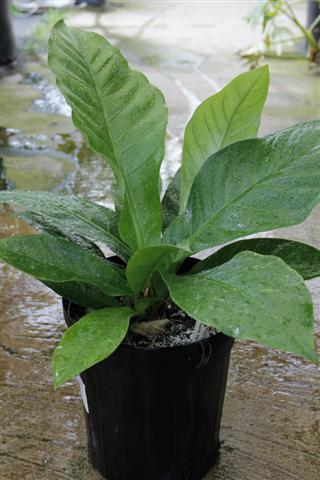

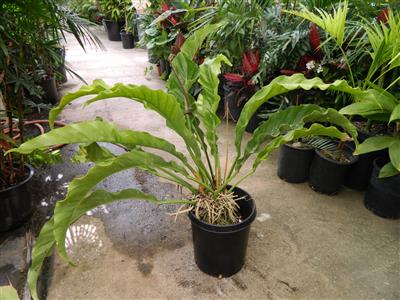
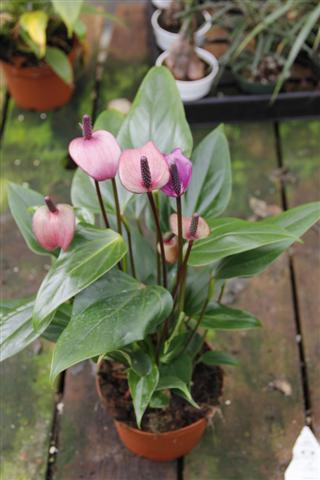
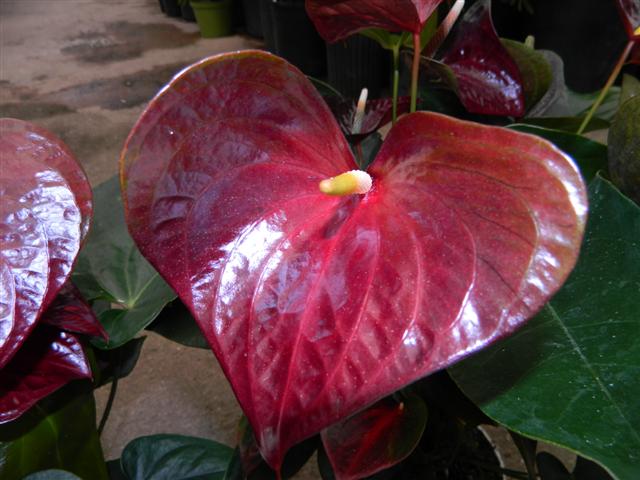
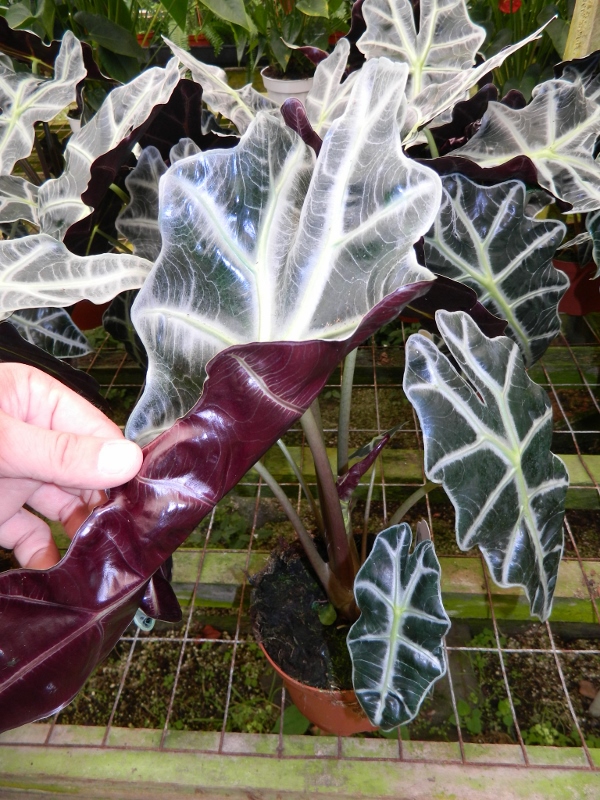

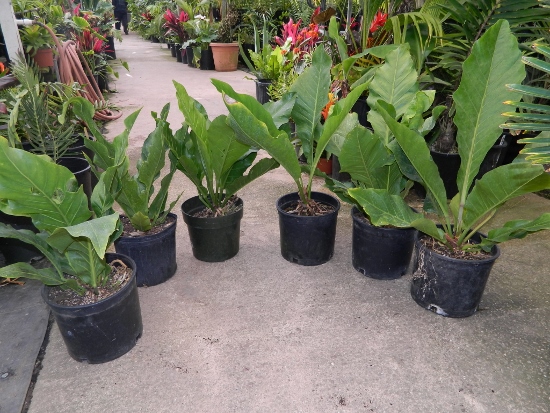
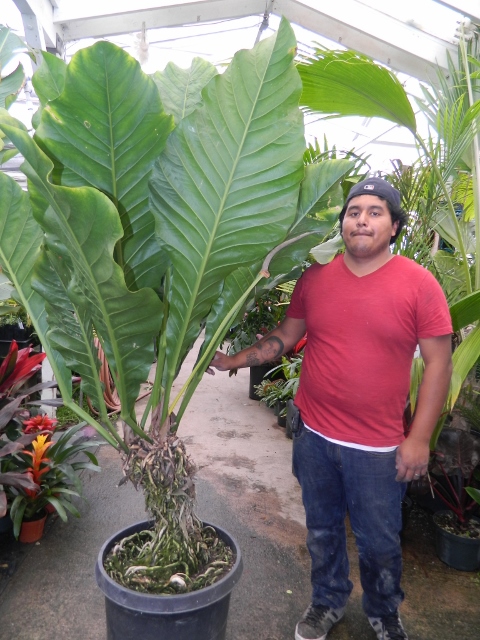
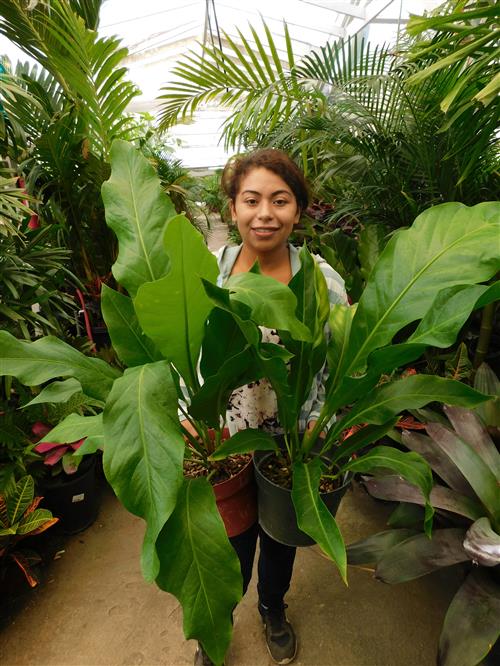

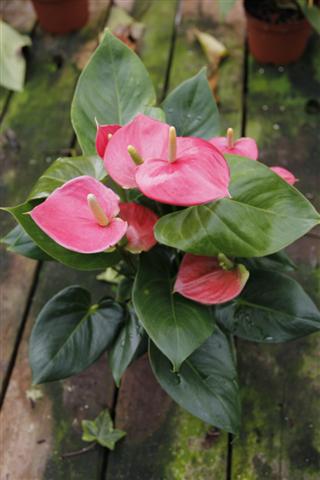
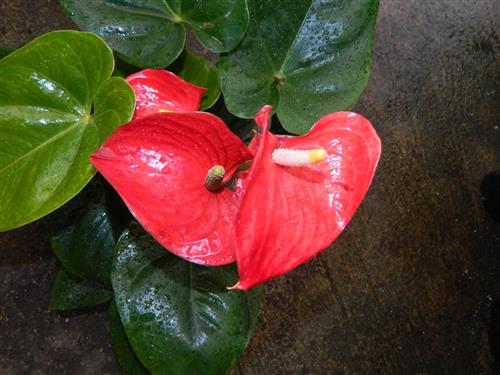
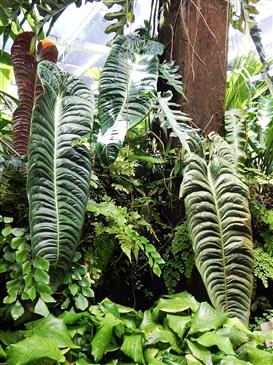
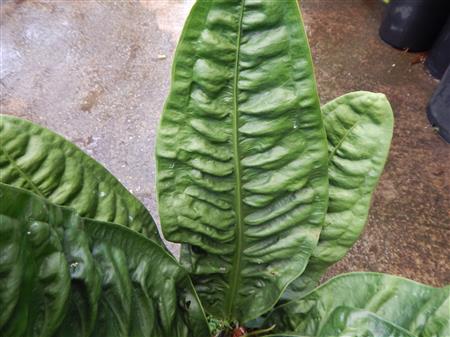
HELICONIA: BANANA-LIKE PLANTS WITH GORGEOUS BLOSSOMS
Heliconia are a group of tropical plants known mostly for their blossoms. Many have heard of the “lobster claw” flower. This is a reference to the Heliconia blossom. The foliage is similar to a banana plant. Blossoms can be upright or pendulant. Heliconia can be dwarf plants or get quite tall, up to 15 feet or so. They sucker and each stem will eventually blossom if conditions are right. They light heat. Some species will survive a freeze. It is beyond the purpose of this article to show an array of Heliconia blossoms. Rather, suffice it to say that I have researched as to which species will blossom for enthusiasts here in Southern California. Many, or in fact, most of the species will not thrive nor blossom in Southern CA. Thus, seek guidance on which species to grow. These species below are some of those that we occasionally have for sale. Availability does change over time. I’ll show below some examples of plants which we offer for sale. This includes Heliconia subulatum, latispatha, lingulata, scheidiana, rostrata and a few others.

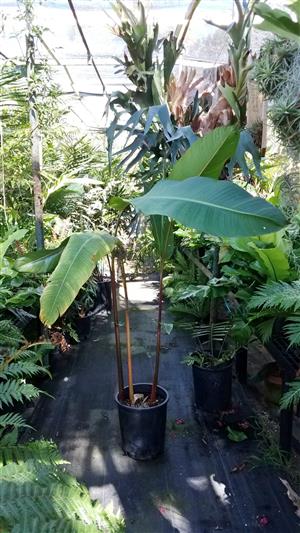
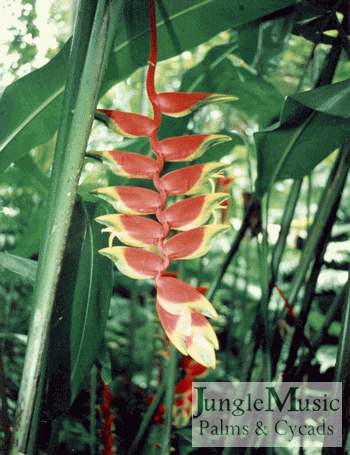



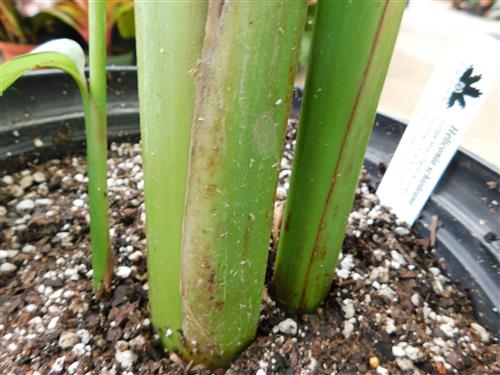
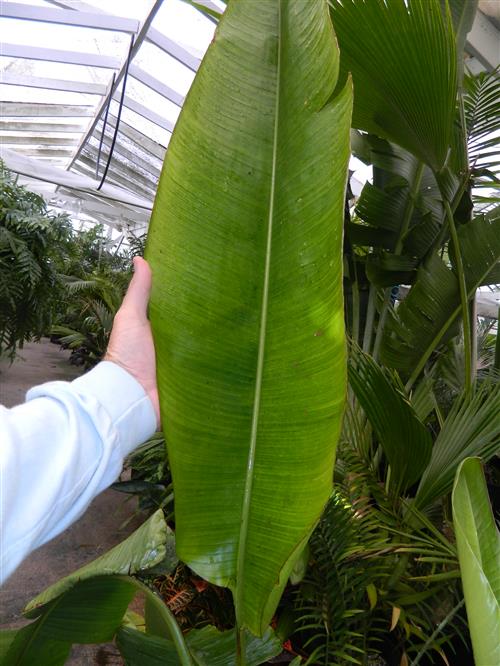
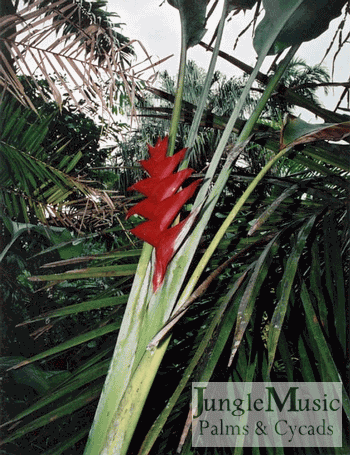
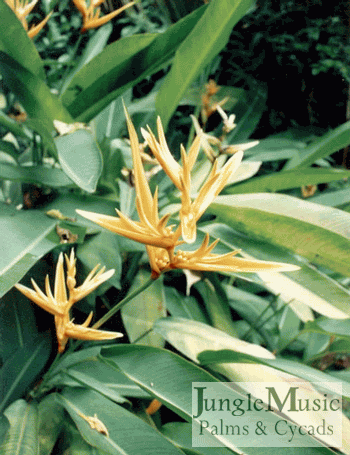


LIGULARIA: SMALLER GREEN LILY-LIKE PLANTS WITH BLOSSOMS
Ligularia are a group of Old World Plants that have leafy, typically “roundish” leaves and typical inhabit bogs and wet areas, mostly in Europe. The leaves may be round, heart shaped, have serrated edges and can be variegated. From time to time we get various forms for enthusiasts. They all like damp conditions and can tolerate coastal sun or good filtered light. An unusual characteristic is that, if they are subject to dry soil, the plants will become limp and actually lay down on the ground. But, if they are promptly watered they will be erect in the morning as if nothing had happened. Most species produce daisy -like flowers – yellow are shown here. We often have several species in stock. Note that the leaves are very similar to a Lily. Snails do like Ligularia and will eat holes in the leaves.

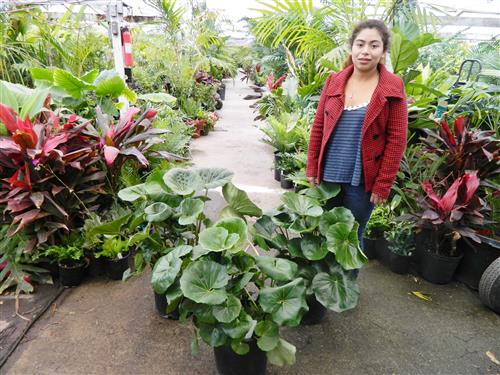
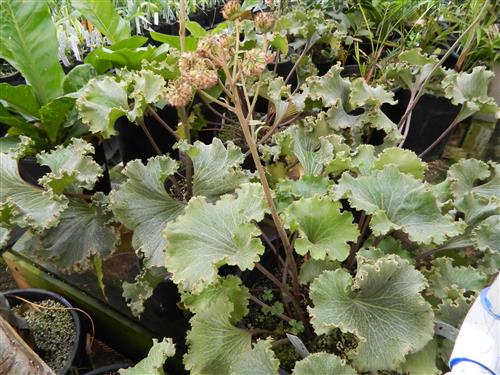
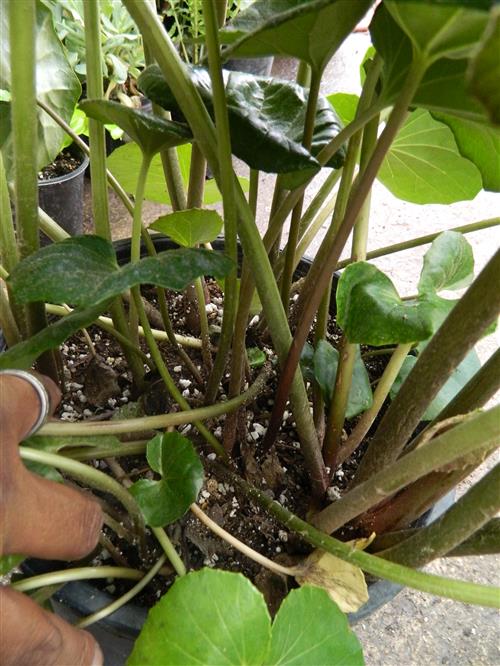

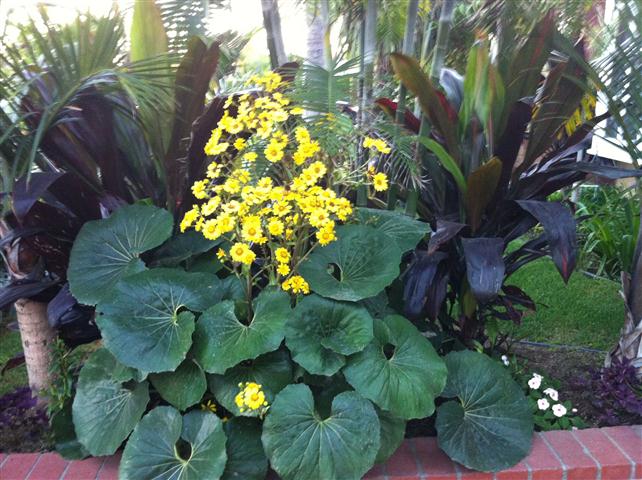
SUCCULENTS: TYPICALLY WANT SUN, CONSERVE WATER
Although not typical thought of as topical plants, if used in the right fashion many succulents can add a real charm to a tropical garden. We’ve found that one of the best locations is right along the edge of a sunny pathway. Succulents, if chosen correctly, stay small and have wonderful spring blossoms. Also, their foliage is often interesting in color and texture. Below are a few examples of smaller succulents that people have liked. From time to time we offer smaller sizes of very interesting and colorful succulents. The selection changes quickly over time. If we don’t have what you want, we can probably obtain it. Most succulents like sun although there are a few species that take shade. Figure mature sizes from under a foot to overhead on a few species. Most are pretty cold hardy.
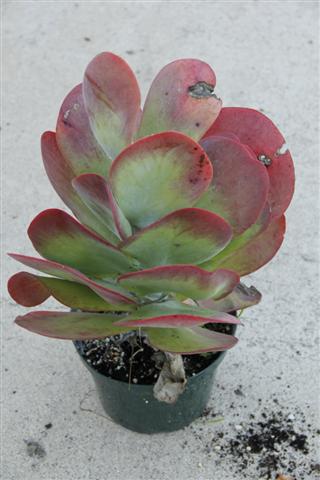
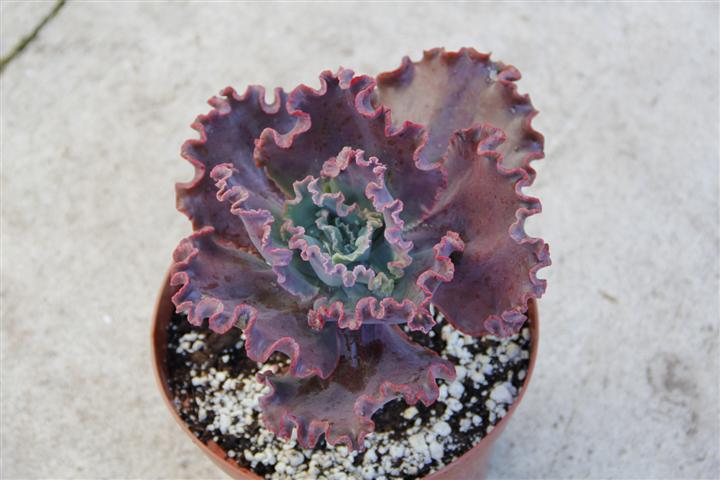
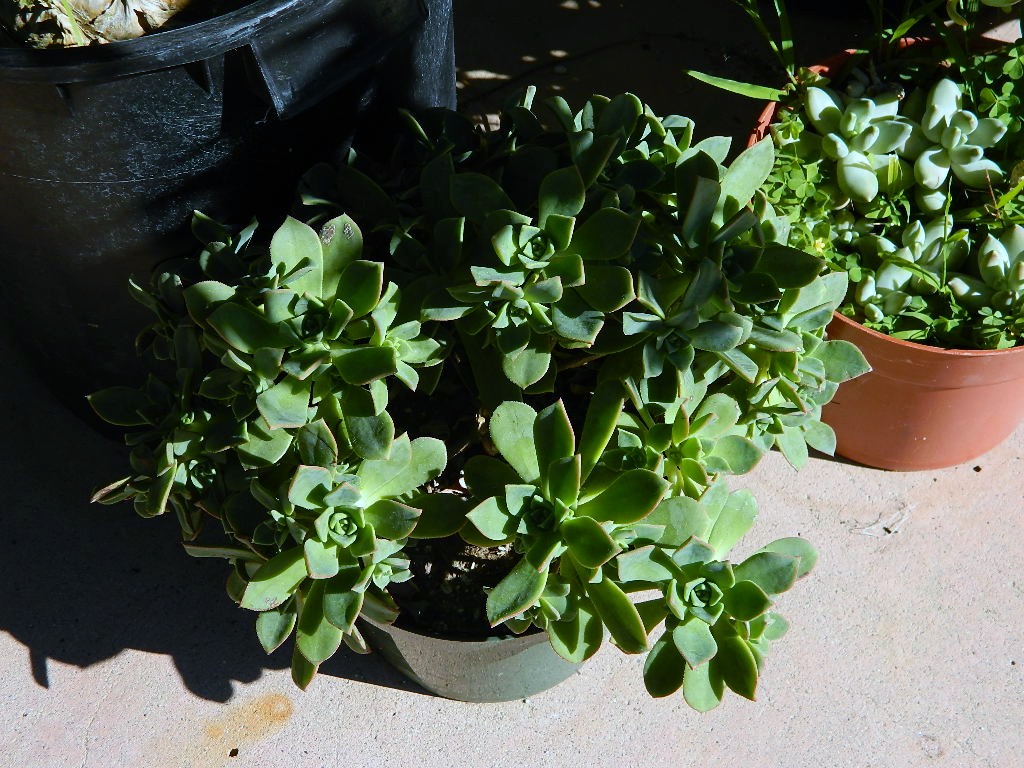

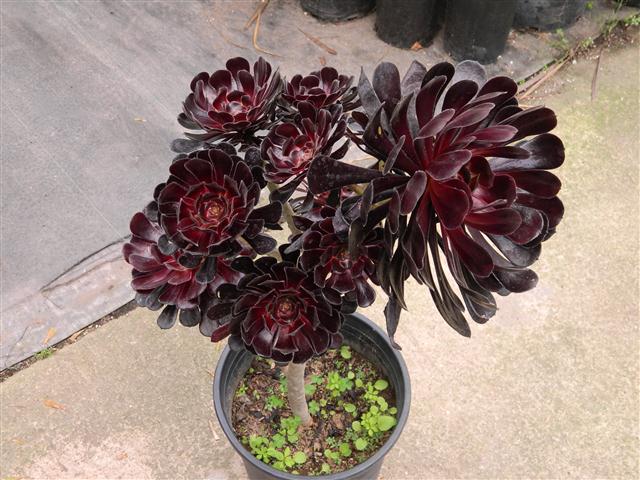

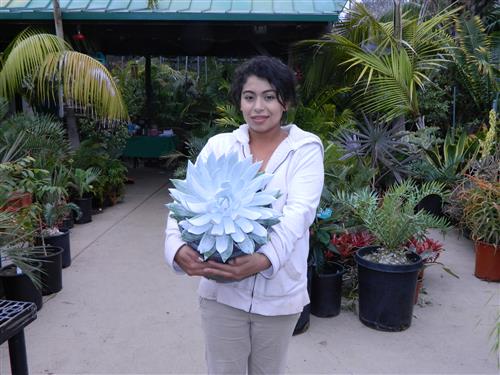



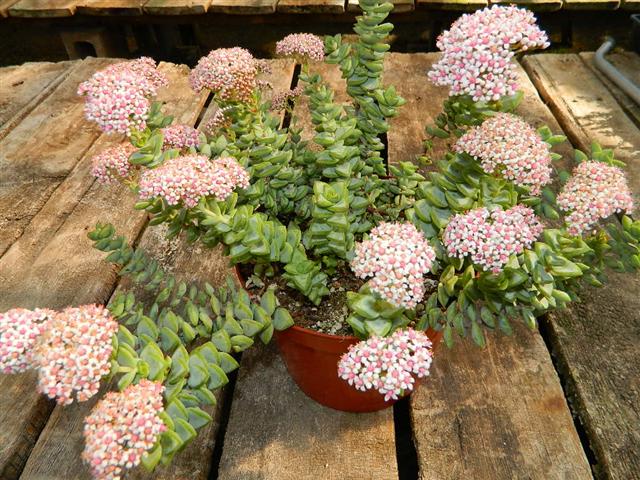
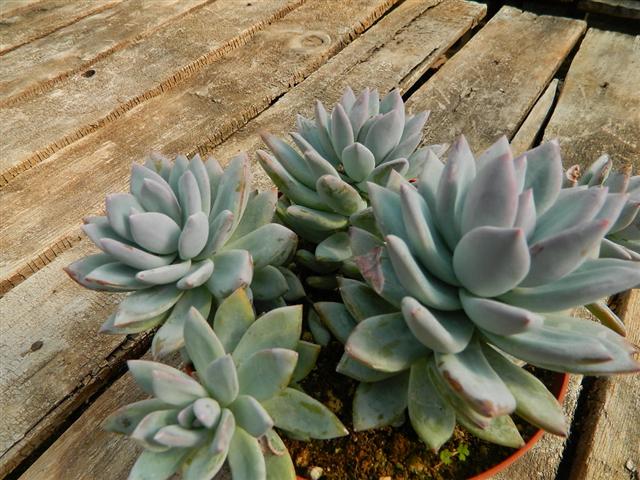
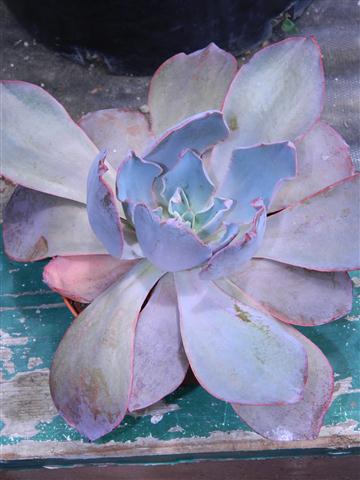
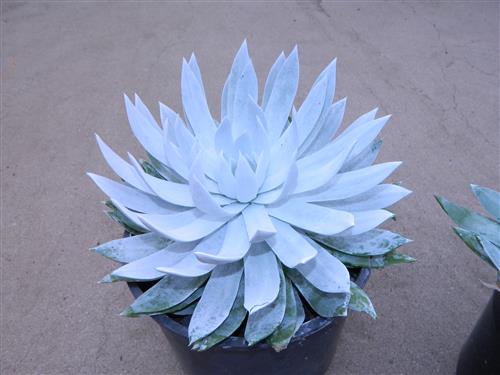
YUCCA ROSTRATA – SMALLER SIZE, LOVES SUN, BLUE COLOR
This is an upright succulent that I’ve included here because of its very blue color. It can form a trunk and get heights of ten to fifteen feet. Cycad lovers tend to like these plants. The leaf color is intensely blue and leaves are narrow. Trunks are thin. It takes (demands) full sun and is slow growing. It has a cold tolerance down to the low 20’s F. It is native to the SE U.S. and Mexico. It adds blue color and contrast to the garden. Availability changes over time. We usually have or can get one for you. They tend to be expensive.
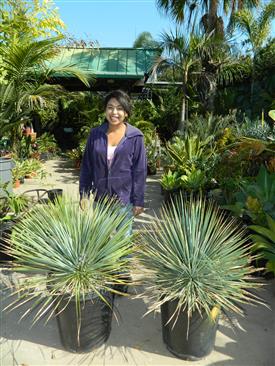
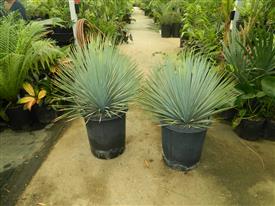


ORCHIDS: SOME STUNNING FLOWERS – EPIPHYTIC ON POSTS & TREES
We don’t carry a lot of orchids. Growing of these plants is a specialty unto itself. But, we typically have or can get what you seek. One always in stock is the Epidendrum Orchid. Its shown in the second photo. As opposed to most orchids which are epiphytic and live in trees, the Epidendrum can survive in he soil. Usually they are orange but some varieties have red, purple, white and other colors. They like sun along the coast. We usually have a limited number of these orchids available. Other types are shown below as well.
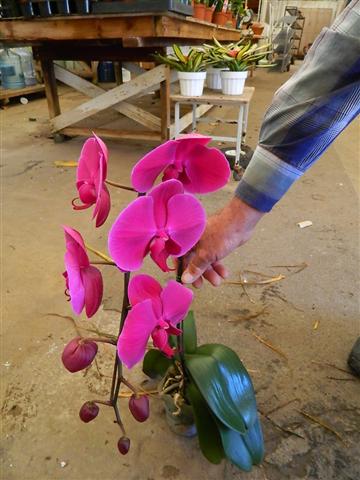
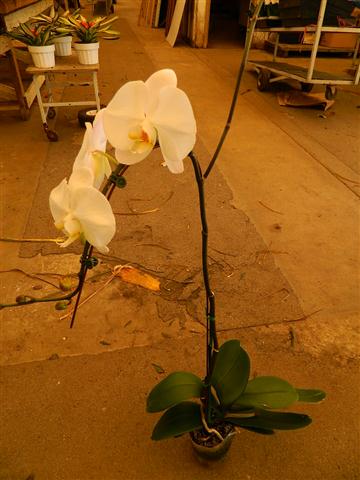
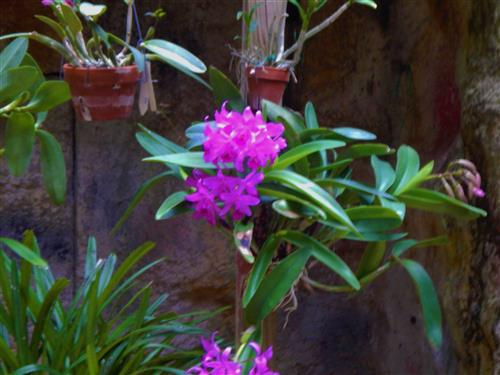
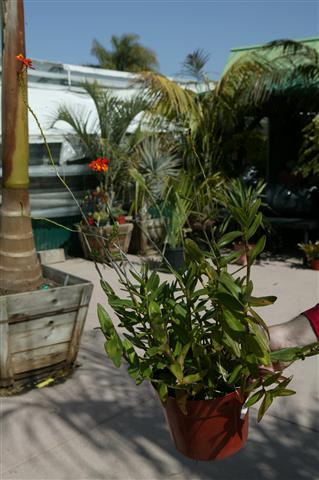
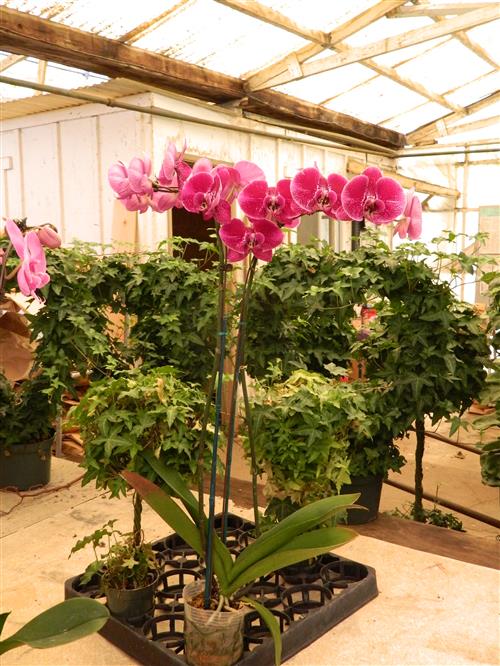
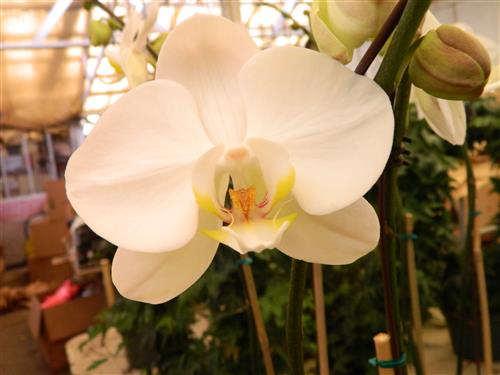
PLUMERIA: FRAGRANT AND COLORFUL BLOSSOMS
This is a flowering tree that gives exotic flowers of many colors. Sun is needed to promote flowering. Plants do not tolerate freezes. Blossoms are all colors of the rainbow. An older plant will branch and can reach a height of 15 feet or more. Below are photos of these plants. We typically have or can get 5g, 15g and even some 25g or boxed overhead plants. We carry a variety of colors. But, we are not a nursery that sells the latest, greatest expensive hybrids. That’s a specialty unto itself.
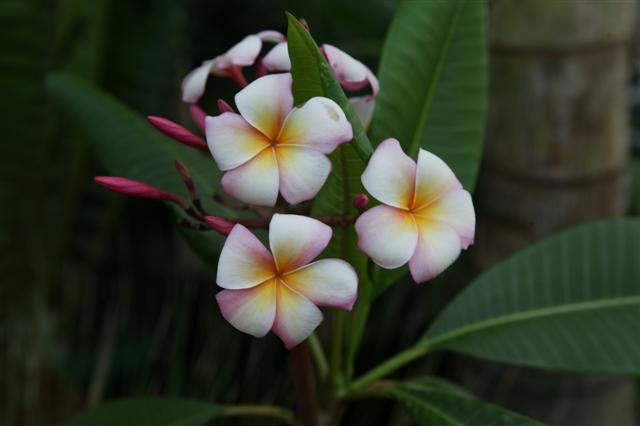

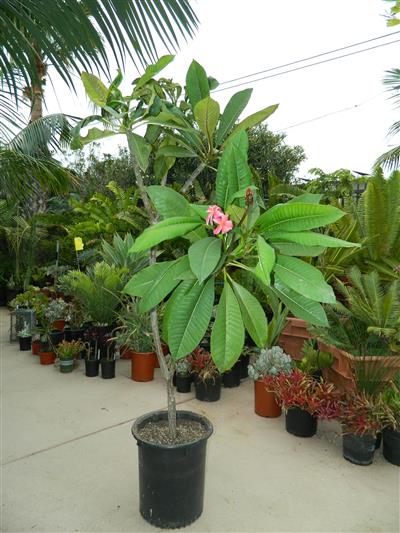





BEAUCARNIA RECURVATA, THE PONY TAIL PALM, ELEPHANT FOOT PALM:
This plant is known for its swollen base. It is not a palm at all. It’s woody base can get eight feet or more across after many decades of growth. It does produce white flowers from the apex. It is popular because of the peculiar swollen base. These slow growing plants are quite peculiar in appearance and can be used as a houseplant in a sunny location.

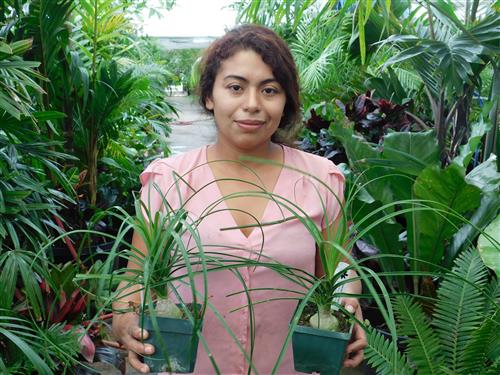

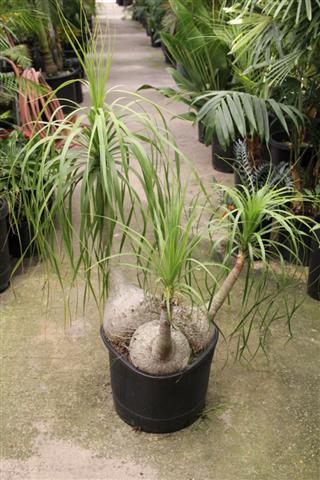
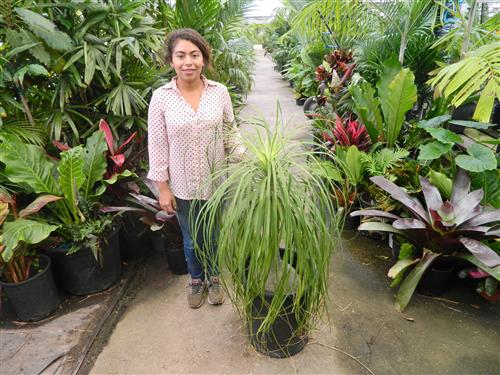
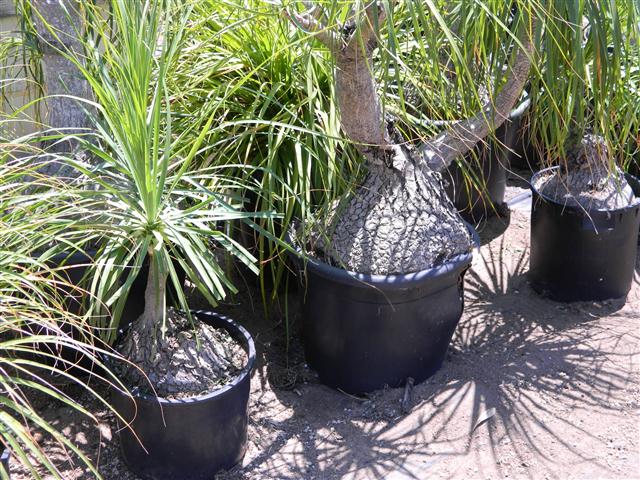
PACHYPODIUM, THE MADAGASCAR PALM:
This plant, like others before it, is not a palm either. But, somehow it has come to be known as a “palm”. It is a spiny succulent plant, typically from Africa. They like heat, sun and to not be watered when cold. They do produce white flowers. This is an example of a plant that fits well into either an area of a tropical garden or a succulent garden. Their trunks can be quite interesting and loaded with spines. They are not super cold hardy so it’d be best to give them freeze protection. We almost always have one size or another in stock.
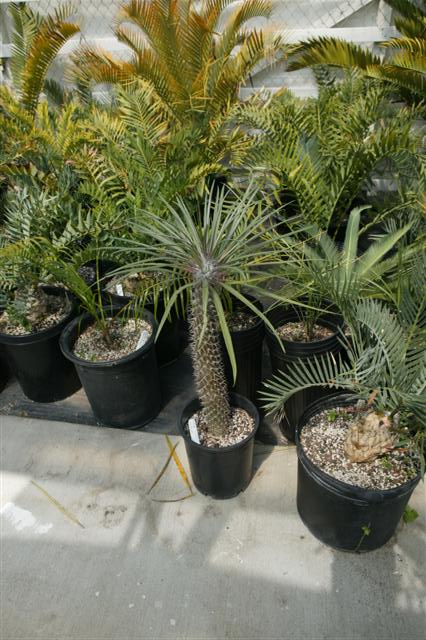
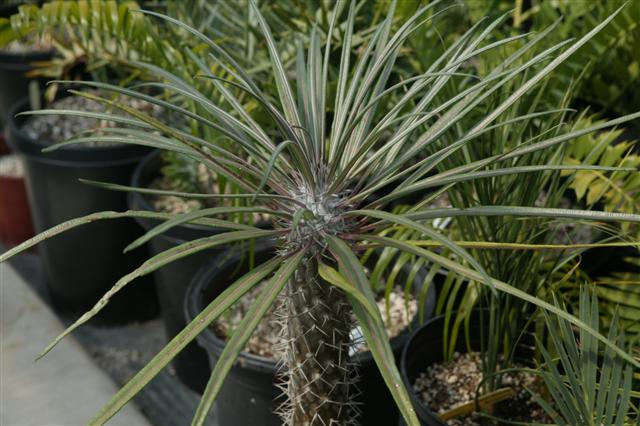
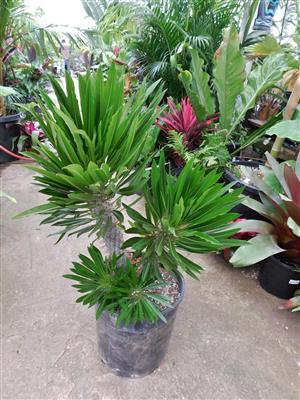
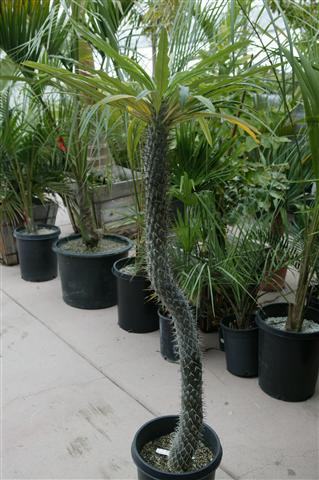
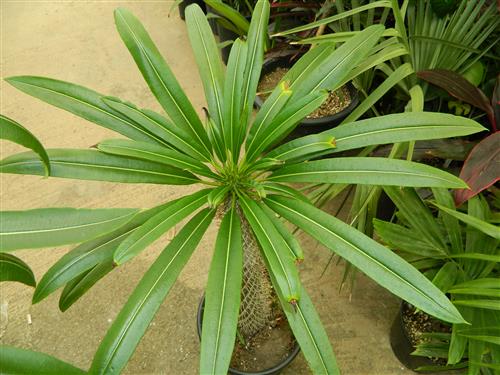
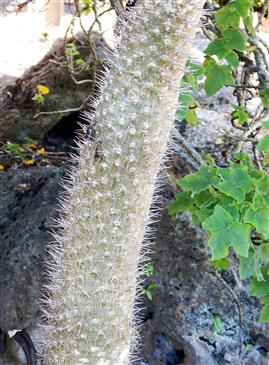
COFFEE ARABICA, THE COFFEE TREE
We grow Coffee Trees and yes, you can actually get coffee beans in many areas of coastal Southern California. We have trees up to about 7 feet tall. They have gorgeous white flowers and the fruit (surrounding the bean) are red. Also nice is they have shiny green leaves and make good house or patio plants. Ideal for Coffee Trees is filtered light. They have difficulty with full hot sun. Below are pictures of young plants. Although typically thought of as a tropical plant, Coffee can be grown in some temperate regions.
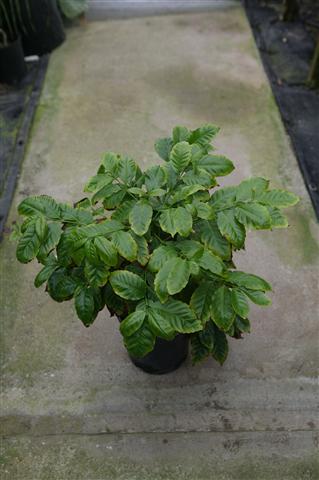
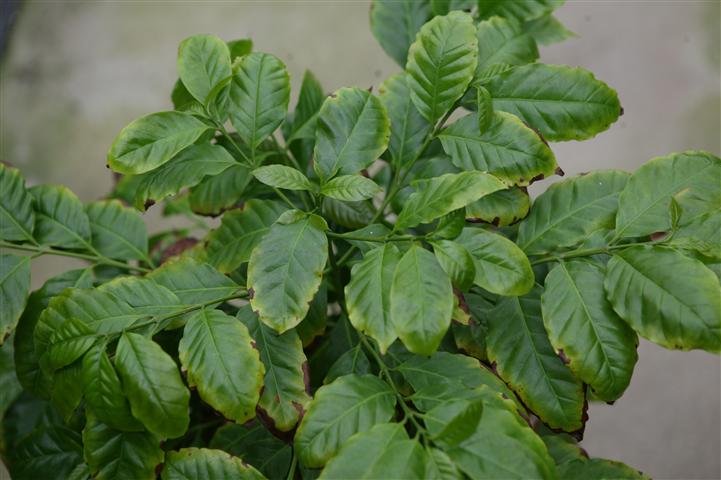
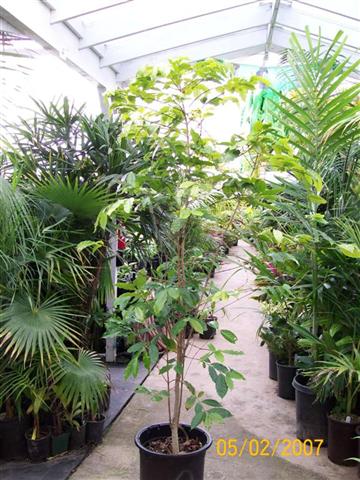
GINGER: BEAUTIFUL FOLIAGE AND ATTRACTIVE BLOSSOMS!
We routinely have a great selection of rare Gingers. I personally prefer some of the very hardy Hedychium which give beautiful and fragrant blossoms, but we have all sorts of types. Below is a picture of a beautiful variegated Shell Ginger. It is known for its foliage, not the blossoms – although the hanging blossoms are long lived. We also have green Shell Ginger. The Hedychium (Kahili) blossoms on the contrary are short lived. They are upright, not hanging. And, they are super fragrant! See photos below There are lots of tropical rainforest Gingers, and many can grow in Southern California. We have five to six different types of ginger available year-round. Also note the thin “Pinstripe Ginger” known for its foliage
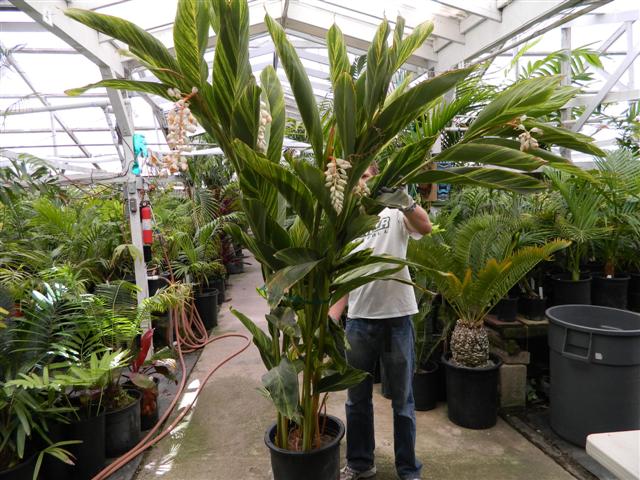
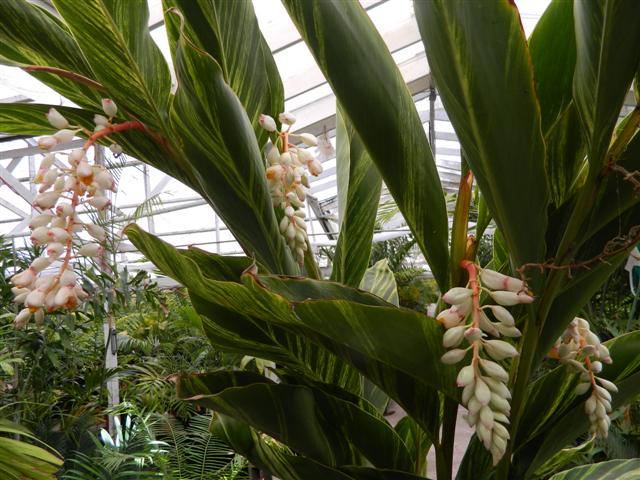
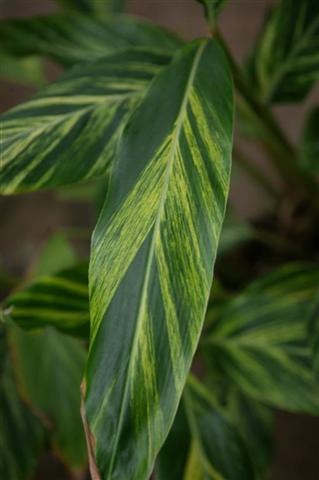

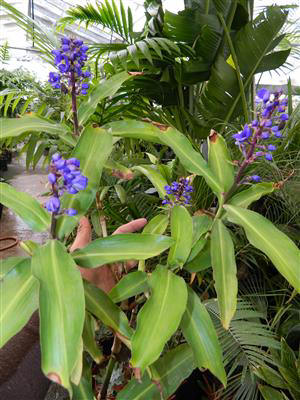
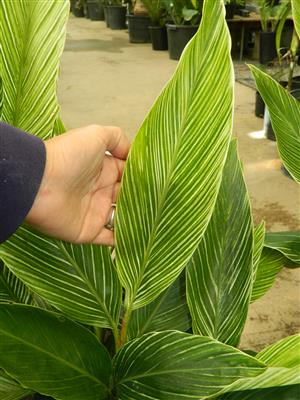



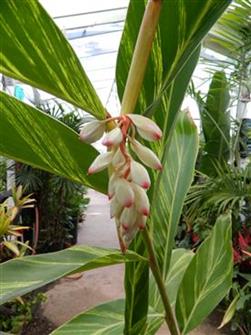
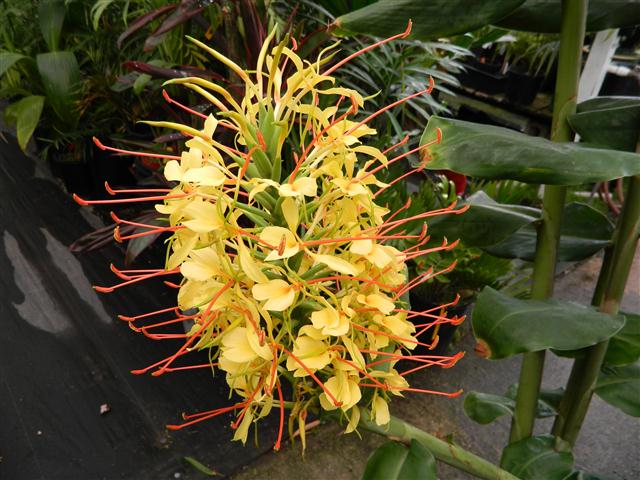

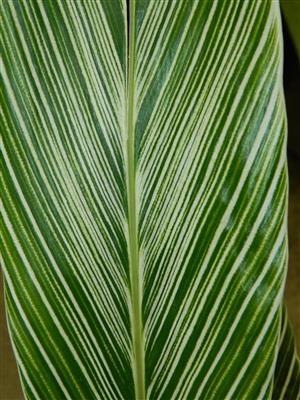
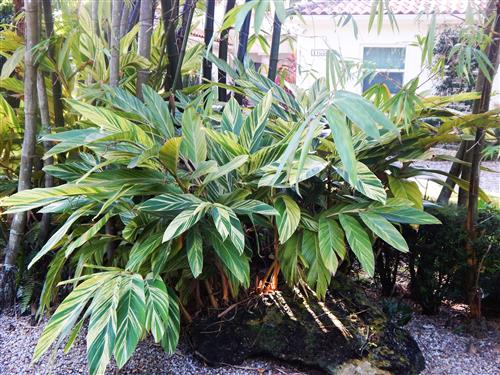
CANNA LILIES: EXOTIC FLOWERS, NICE FOLIAGE, SUMMER PLANT
When weather warms up and they are in flower, we try to obtain and sell an assortment of Cannas. The foliage dies back a bit during cold weather but come back strongly when it warms up. The blossoms are very nice. There are many colors and types available in season. Shown below is also a rare variegated lean Canna as well as the multicolored Canna tropicanna.
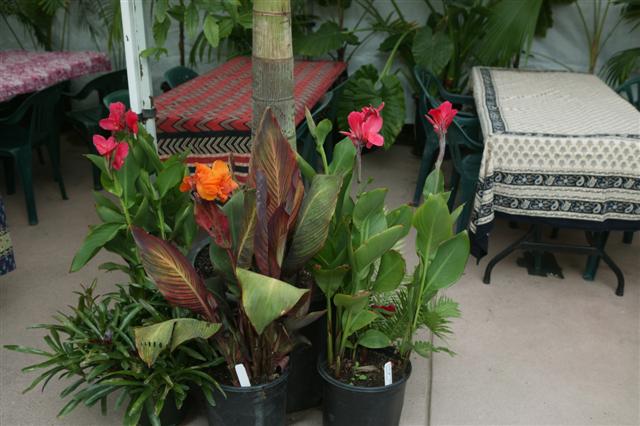
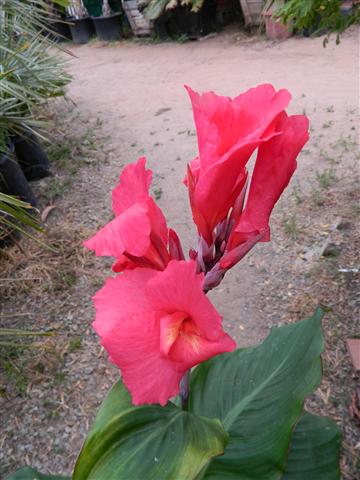

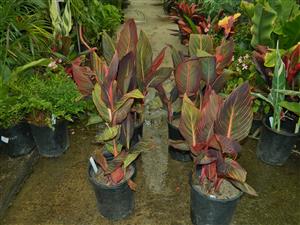

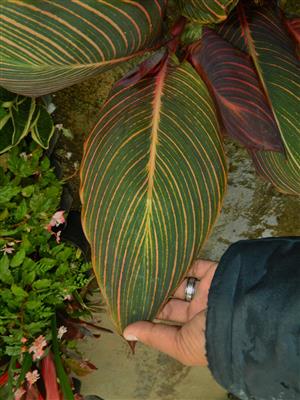
TROPICAL TREES: MANY TO CHOOSE FROM, SOME EXOTIC FLOWERS
From time to time we get in some flowering tropical trees. We select types and species that have impressive blossoms. This includes such types as Spathodea, Schizilobium, Brachychiton, Tabebuia, Chorisia, Brugmansia,, and others. Below is a Spathodea which gives gorgeous orange flowers and is easy to grow in Southern California. Also shown is the flower of a rare yellow form of this species. On occasion we get in the Fern Tree, Schizilobium. Remember that many of these trees want sun and get typically twenty feet tall or more. So, they’ll need some room to grow.
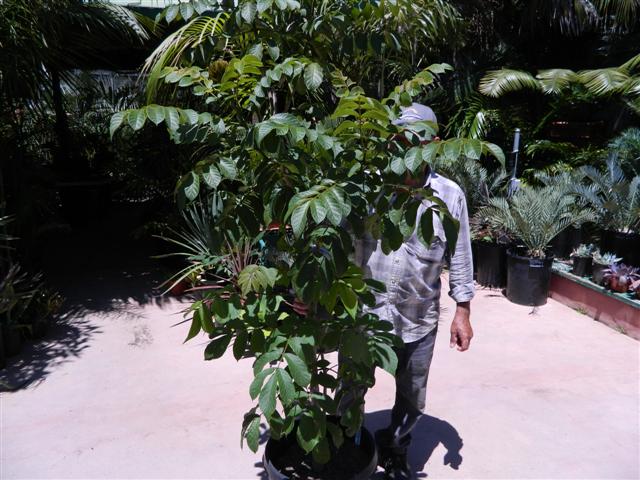
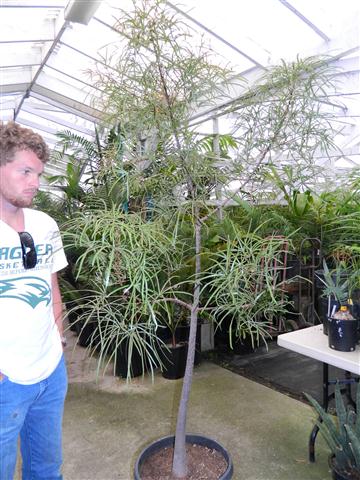
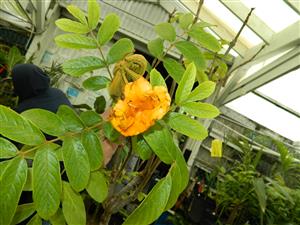
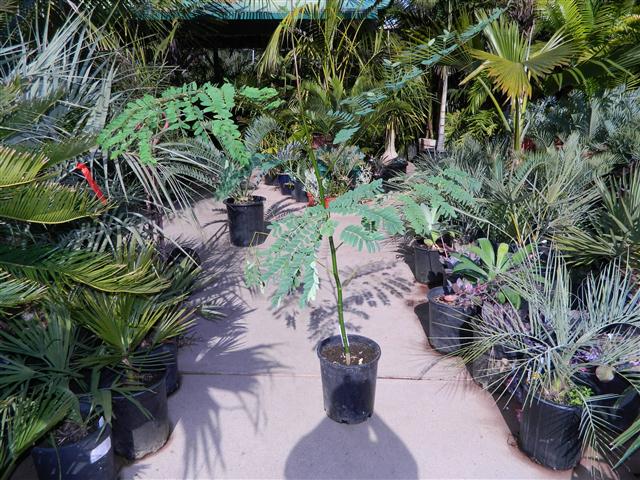
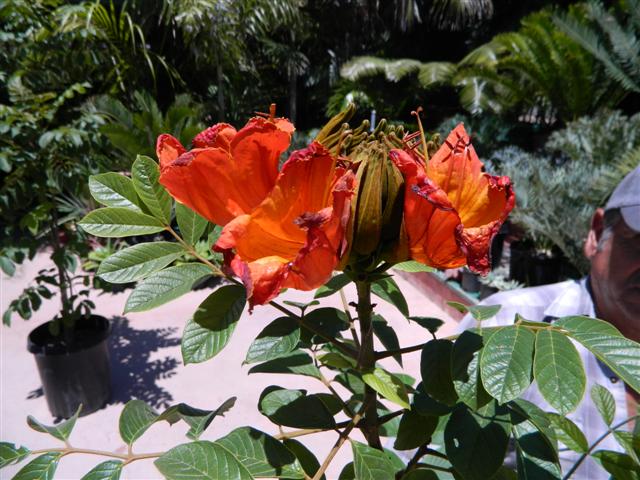
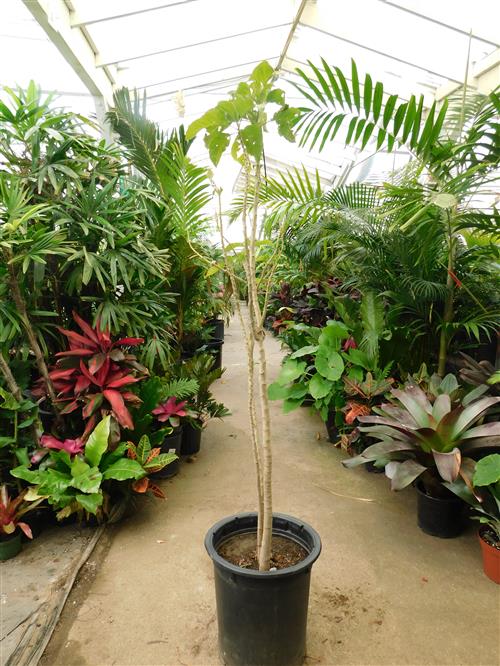

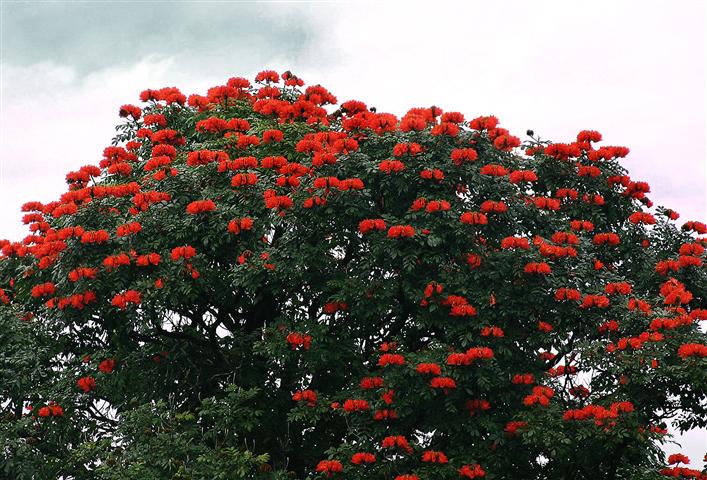
ENSETE AND BANANAS – ORNAMENTAL AND EDIBLE, FRUITING TYPES
Most people know of the “Red Banana”. This is actually not a Banana but rather a plant called Ensete. It does not produce edible fruit. The first two photos shows the Red Banana. The third photo is the another non-fruiting, yellow suckering form of Ensete. Following these two are photos of the fruiting Banana we carry – the Cavendish Banana, Musa orinococo, velutina, goldfinger and others. More recently we’ve been carrying four to six types of rare edible Bananas which can be grown in Southern CA.
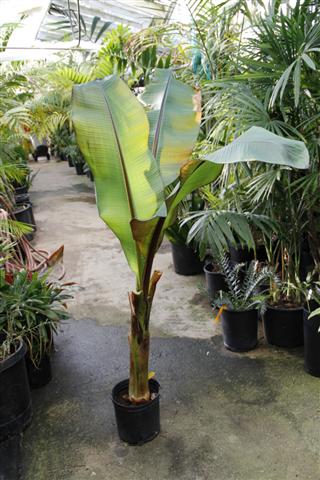
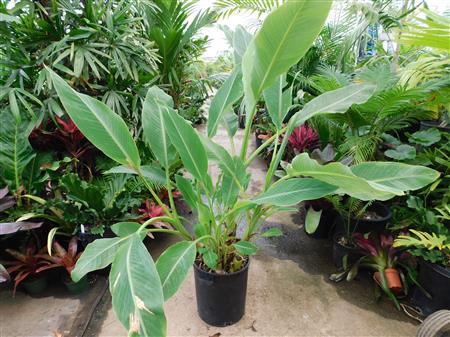
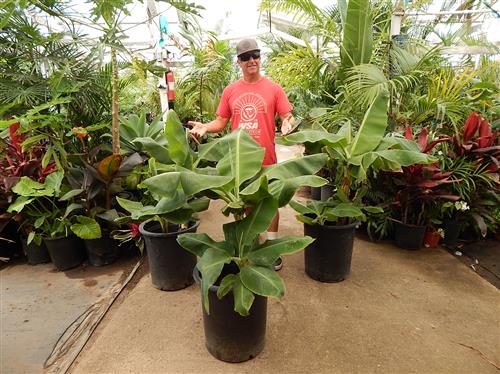
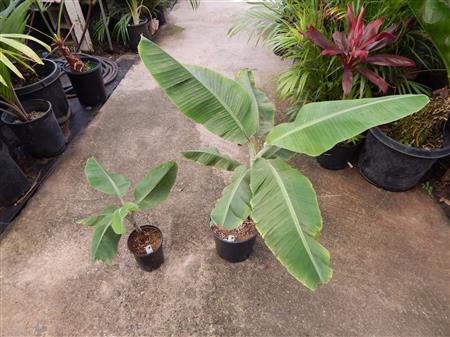


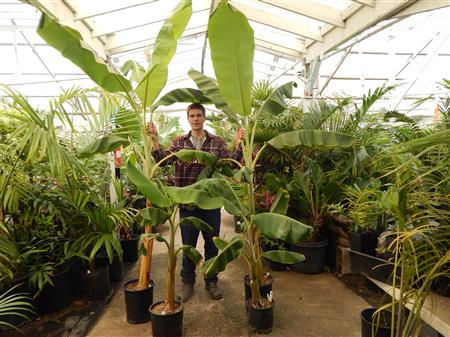
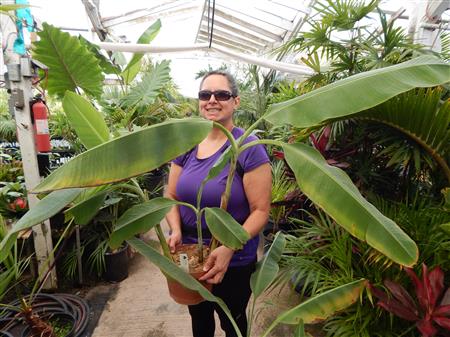
PANDANUS SPECIES, THE SCREW PINE:
There are many types of this unusual plant. It gets its common name from the fact that emerging leaves swirl around the trunk in an ascending and rotating fashion, giving it a “screw” appearance. Trunks tend to be shiny and appealing. Some species survive in Southern California and can get up to 20 feet or more. Many have large arial roots at the base making them a type of “stilt plant”. There are two species we particular recommend, Pandanus utilus and furcatas. Another nice species is Pandanus odoritissima. Be aware these are difficult to find. We attempt to offer at least one species continually at the nursery. Most types want full sun. But, there are many species which don’t survive here.
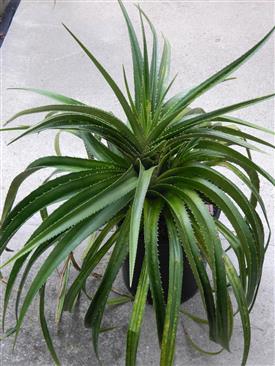
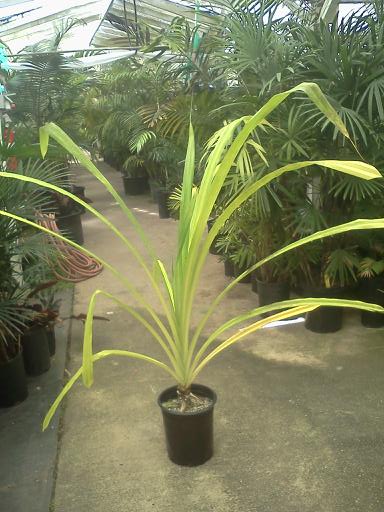
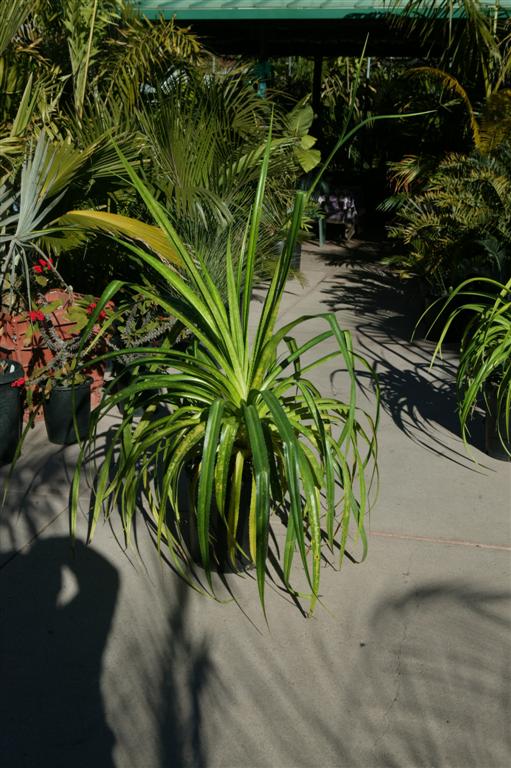
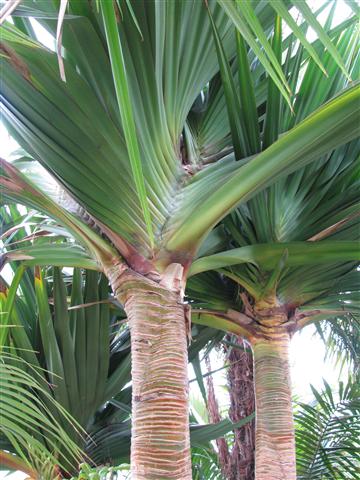
KALANCHOE AND CALENDIVA – QUICK GARDEN COLOR
These succulent type plants are super colorful with blossom colors of all of the rainbow. Colors range from white through yellow, orange, red and then to purple. Plants stay small and prefer filtered light. I am showing both of these genera together as they are quite similar in appearance. We try to keep a ample supply of these on hand and they are not expensive to buy.
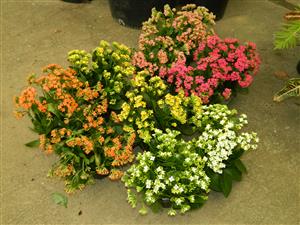
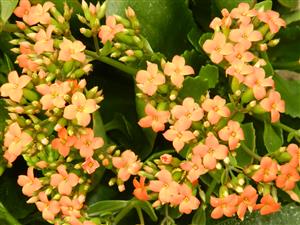
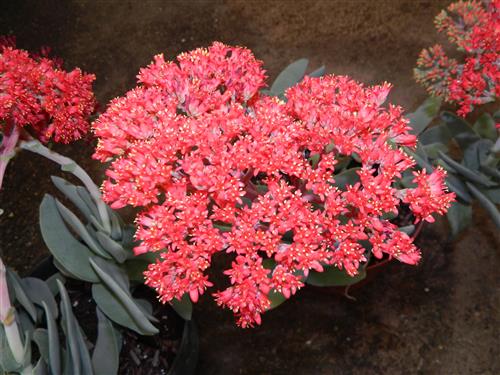
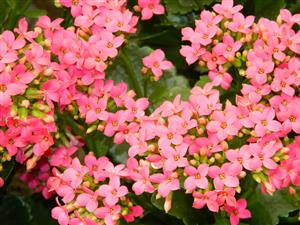

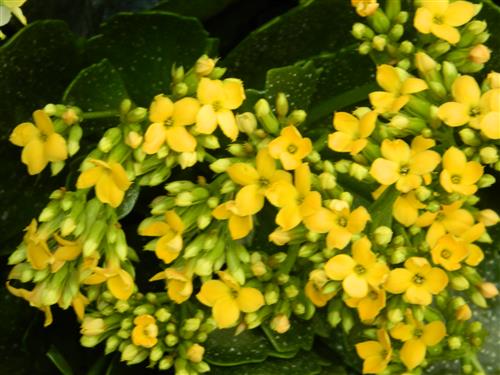
DASYLIRION LONGISSIMUM – THE MEXICAN GRASS PLANT
AND ANOTHER VARIETY
There are multiple species in the genus Dasylirion. The most common is the Mexican Grass Plant. It is a sun loving plant with long, tubular, round, thin leaves. It looks much like a green “pom pom”. They will form a short trunk over many years and are quite cold hardy. Although they appear to be a cycad, they are not. We have two species of Dasylirion available, longissimum and wheeleri (last two photos). The latter has spines on the more flat leaflets and more of a blue color. Both species prefer full sun.


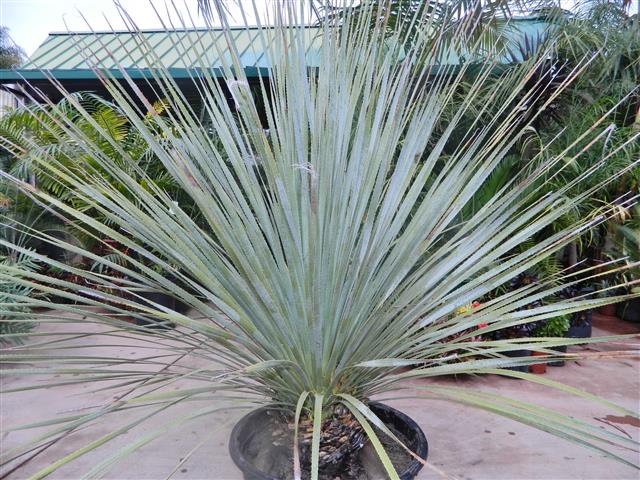
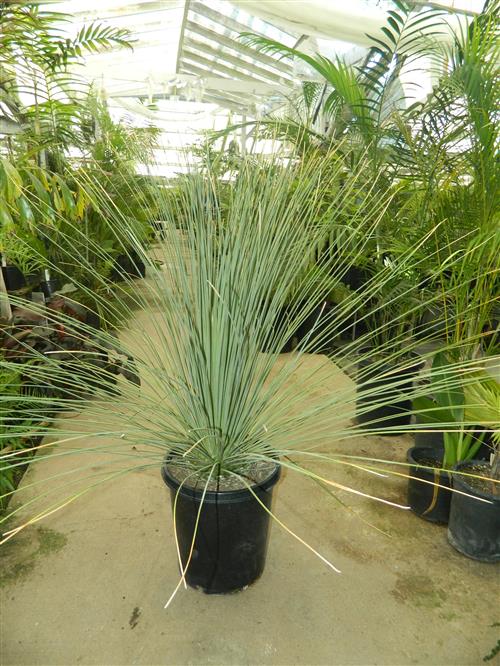
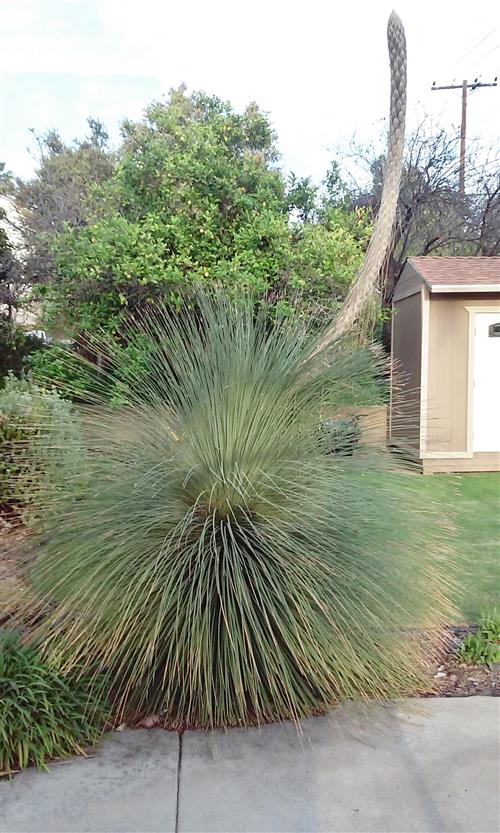
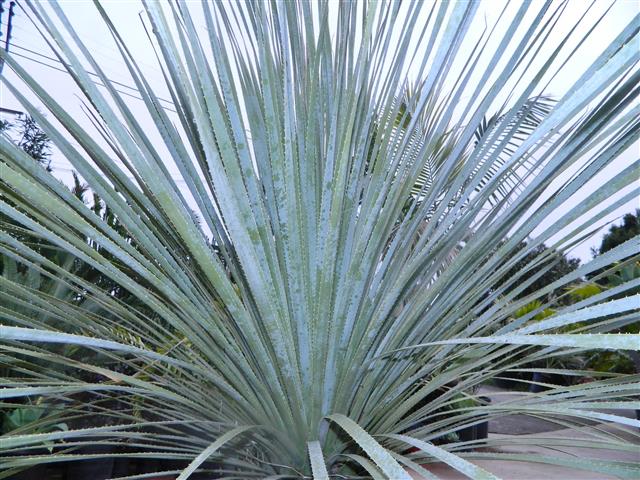
TROPICAL APPEARING GERANIUM – COLORFUL, EASY TO GROW
These are not your mom’s geraniums of the past. These plants have big flowers in many colors. They are hybrids which have been developed for flower size and color. Most are easy to grow, will take sun and have pretty good cold tolerance. They are also wonderful patio plants or in pots.
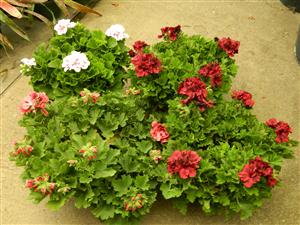

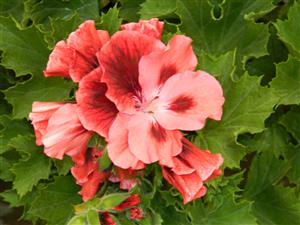
SANSEVIERIA, THE MOTHERS-IN-LAW TONGUE PLANT
This group of plants are a suckering plant with long, blade like leaves coming from the soil. They are fairly cold hardy, don’t take much water and prefer filtered light. They are easily adaptable to interior environments and are slow growing. There are various species in this group. All are easy to grow. It is not unusual to see plants with patterns on the leaves or variegation as shown.



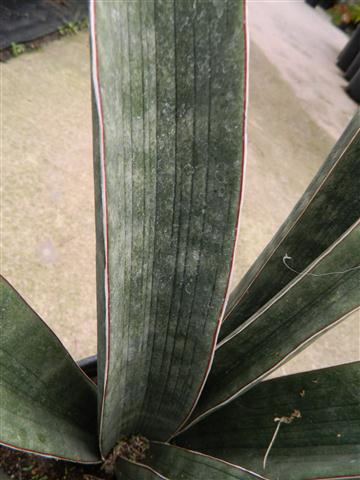
DRACENA SPECIES – LOTS TO CHOOSE FROM, EASY TO GROW
This is a group of plants that has a wide range of appearance and are a very popular house plant. Known as the Corn Plant, they are typically upright growers getting up to about 8 to 10 feet tall. The “Lucky Bamboo” Plant is actually a form of Dracena. The Dragon Tree plant described above is also a type of Dracena. But, the most common types are similar to the ones below. They have soft leaves and a thin vertical stem. They are very popular as houseplants and leaf appearances are different among the varieties and hybrids. They can be grown in the garden and usually want filtered light or part day sun.

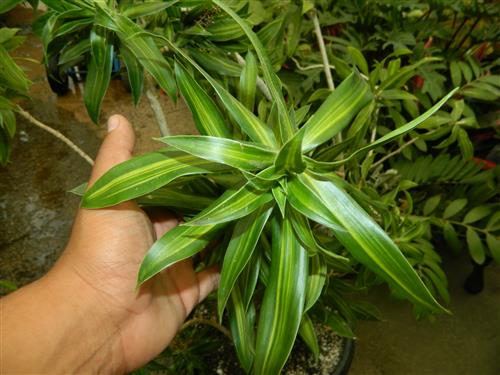
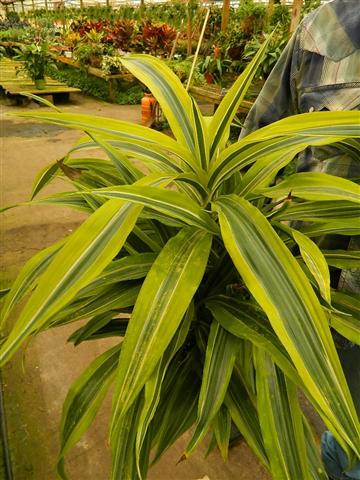
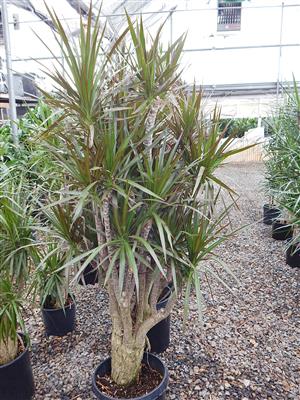
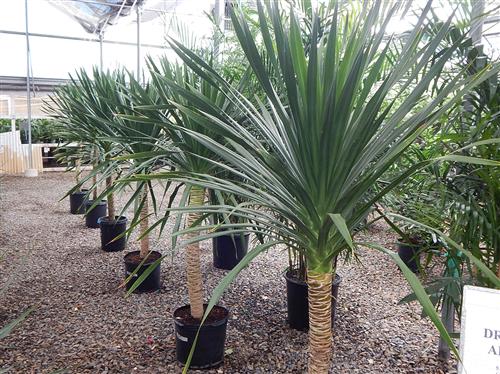

PAVONIA MULTIFLORA –
DWARF SHADE TREE, YEAR-ROUND RED FLOWER CLUSTERS


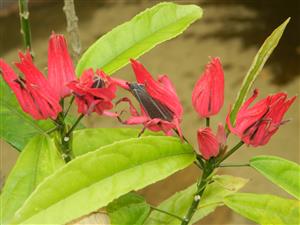

MORE TYPES/CHOICES COMING SOON!
TOO SEE ANY OF THESE TROPICAL PLANTS just drop by the nursery. We’ll show you what we have in stock.
TO MAIL ORDER ANY OF THESE TROPICAL RAINFOREST PLANTS, just give us a call. We can ship almost any size plants.
Thank you for reading about our tropical plant companion plants. We try to maintain a good selection of colorful rainforest plants and
unusual items for the garden. If you are specifically searching for an unusual or specific item, feel free to contact me.
Phil Bergman
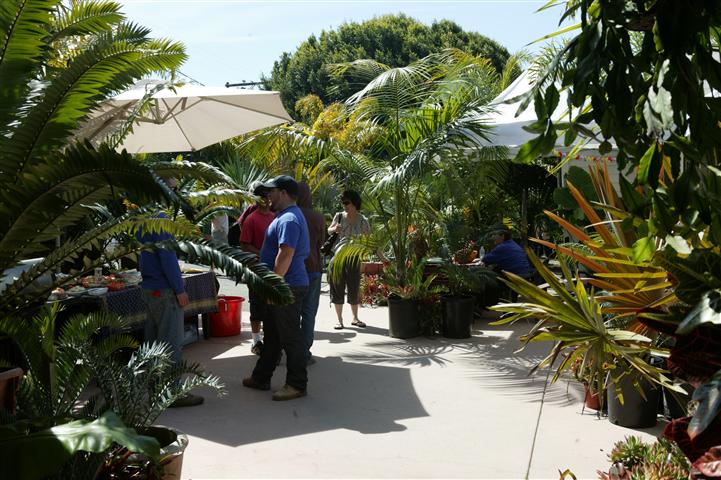

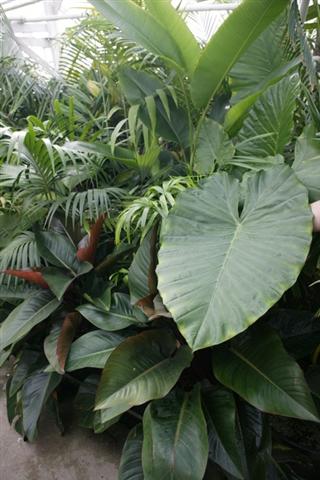

- PALM TREES, CYCADS & TROPICAL PLANT BLOG - October 1, 2020
- TRACHYCARPUS
The Windmill Palm - September 30, 2020 - FAN PALMS –
PALMS WITH CIRCULAR LEAVES - September 29, 2020












